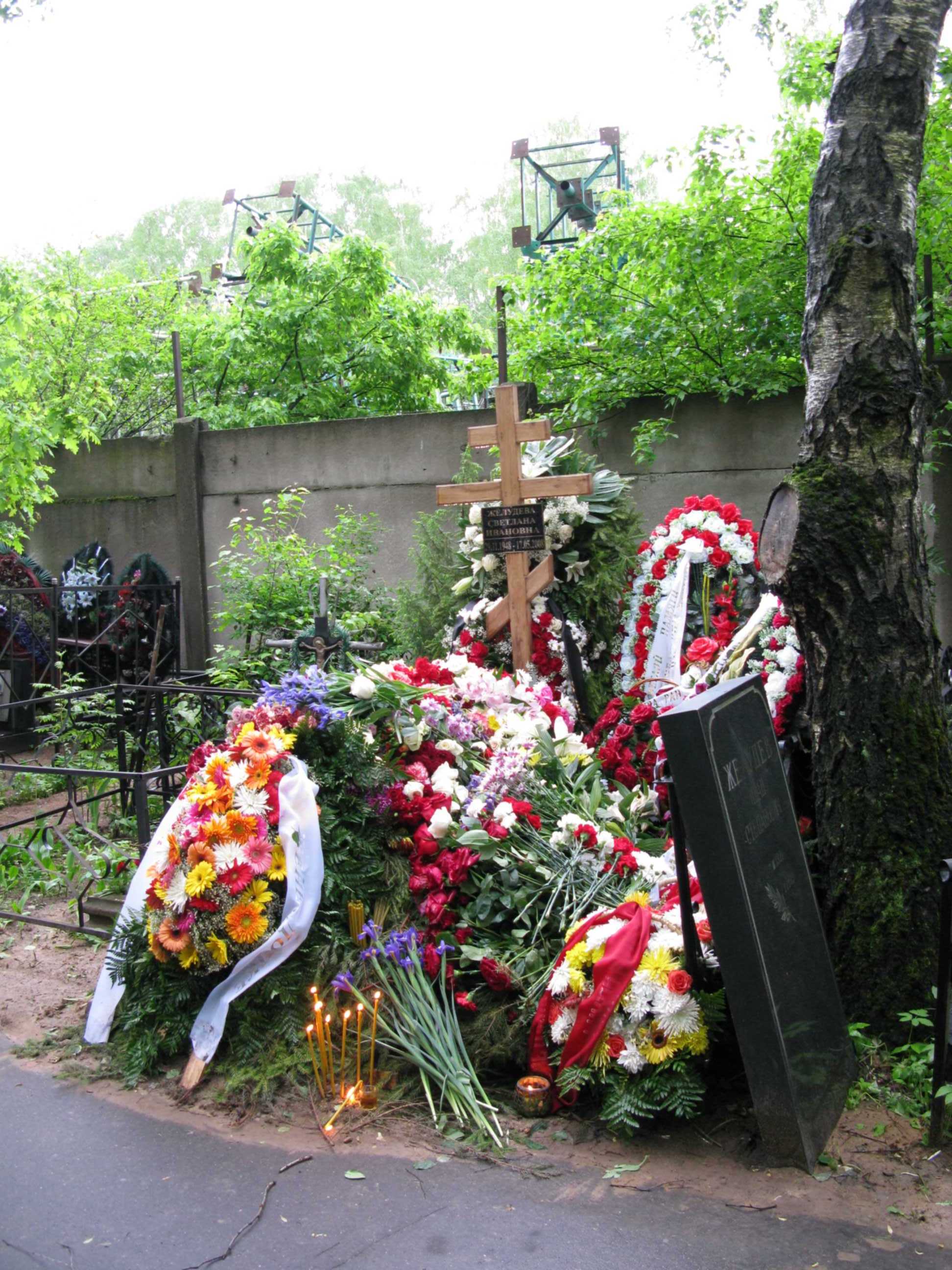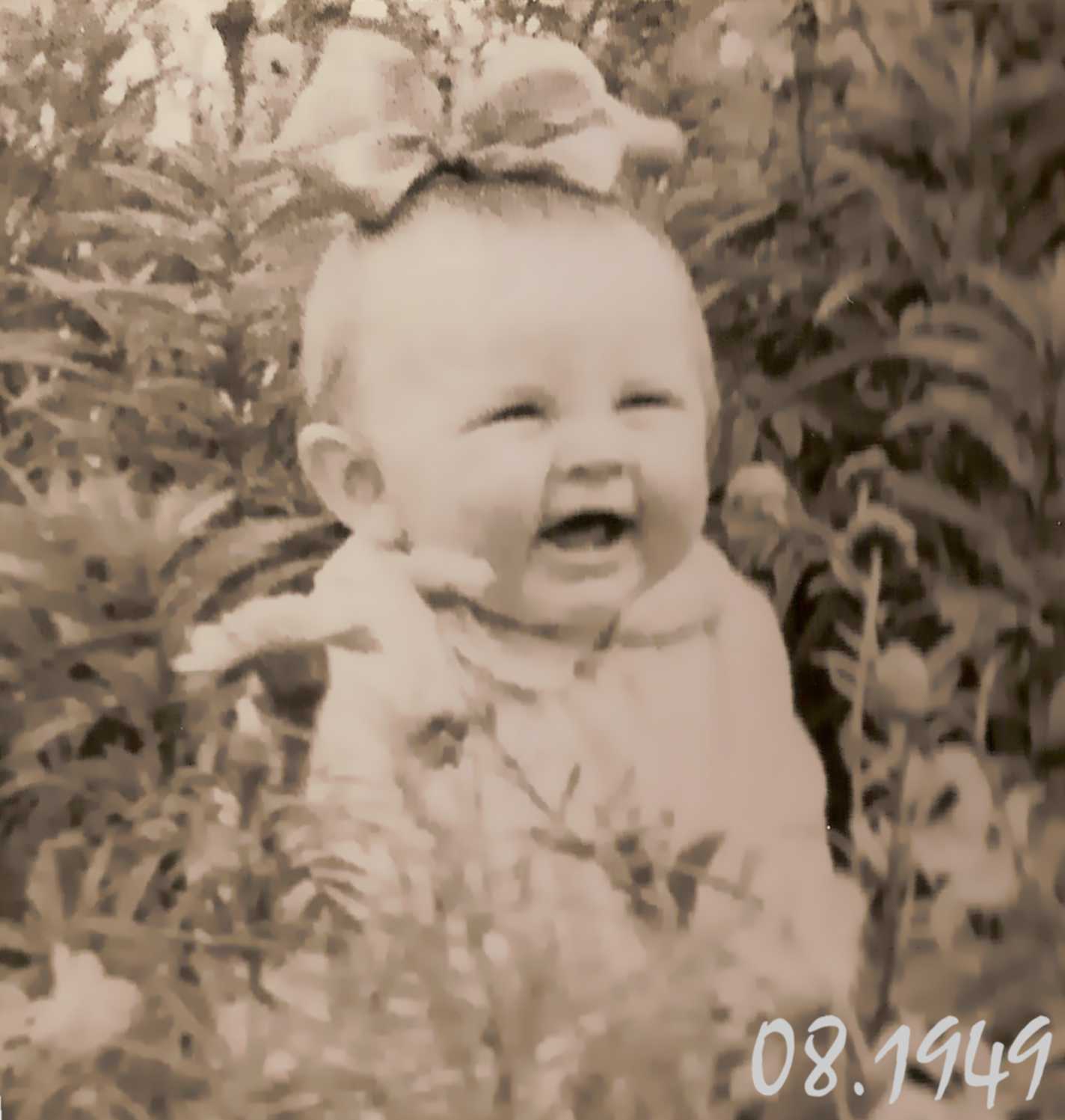
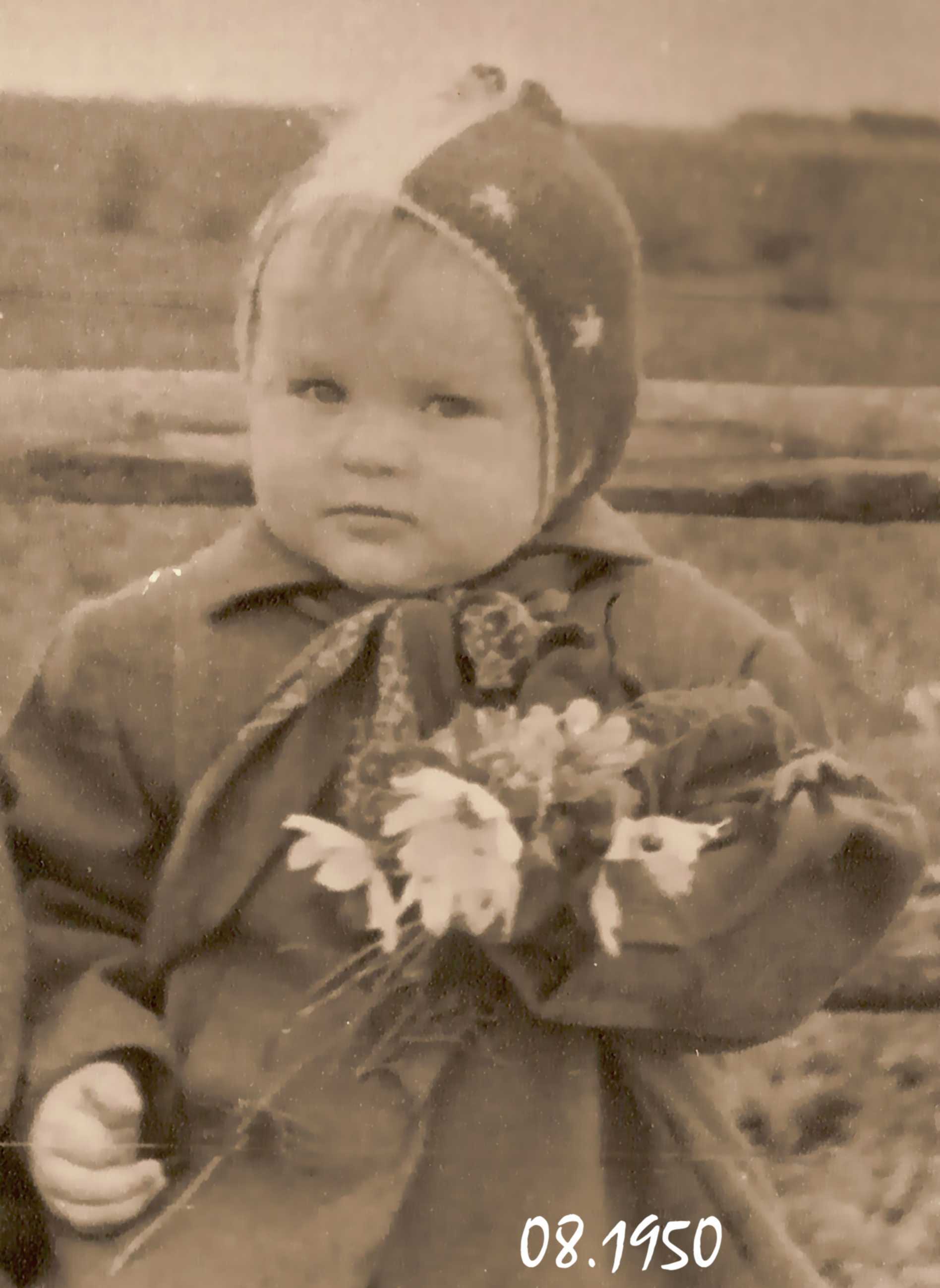
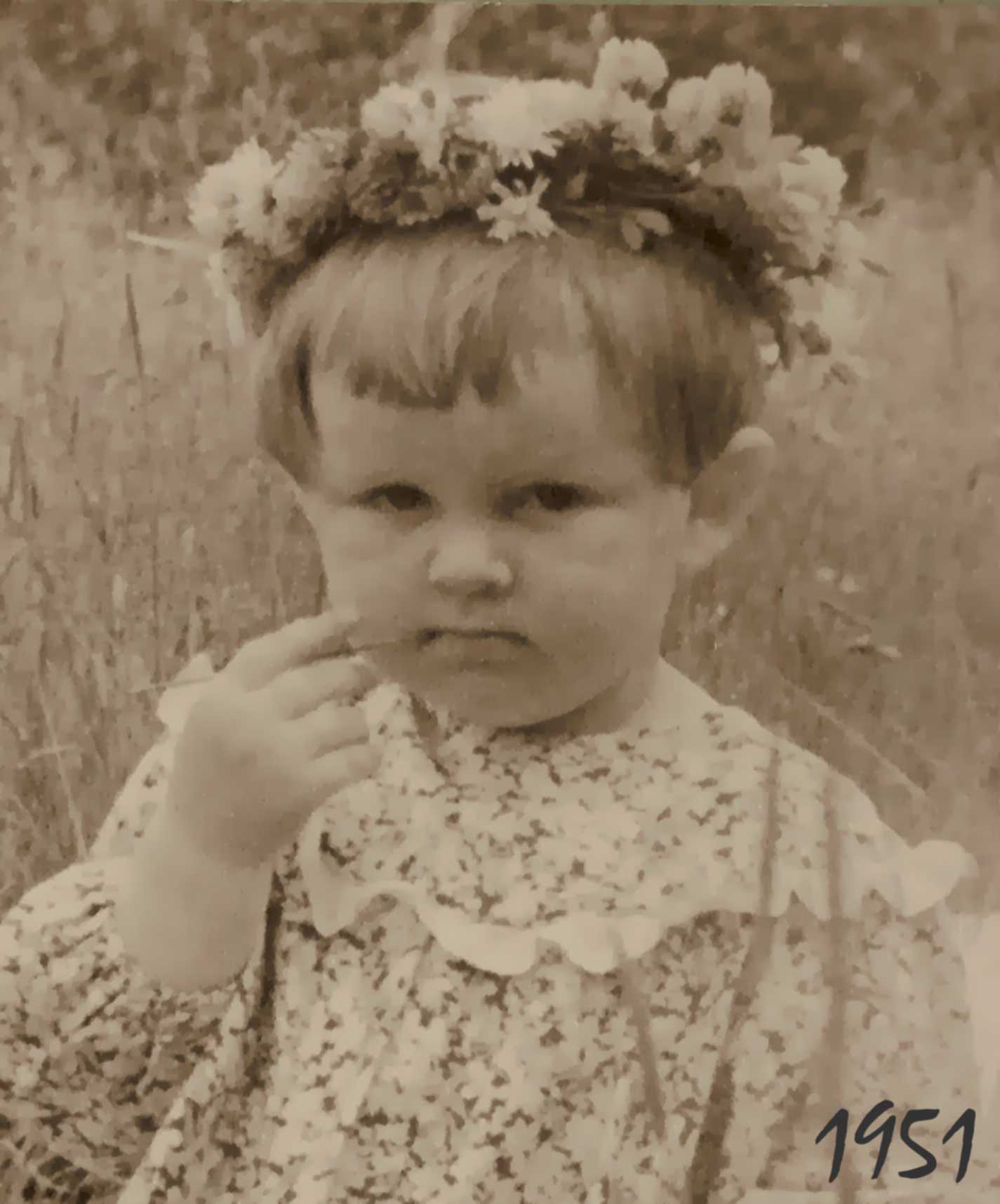
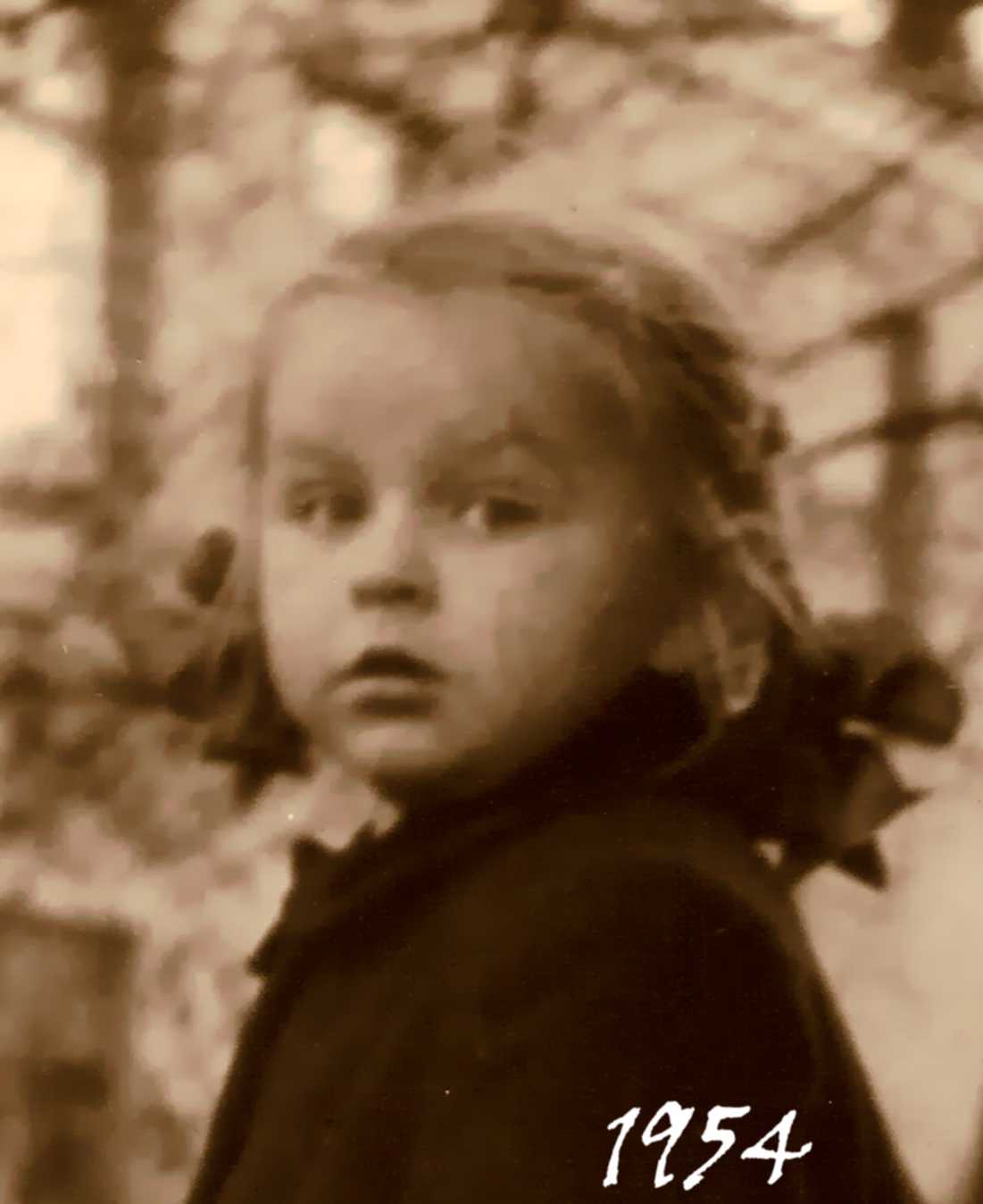
Svetlana was born in Moscow on November 29, 1948. Her father, Ivan Stepanovich Zheludev, was born in 1921 in the village of Zagolodye, Usvyatskiy District, Pskov Oblast. He was Dr. Sc. (Physics and Mathematics), Professor, and worked at the Crystallography Institute of the Russian Academy of Sciences; he died in 1996. Her mother, Galina Antonovna Zheludeva (Krasnikova), was born in 1926 in the town of Trubchevsk. She is Cand. Sc. (Physics and Mathematics). She worked at Moscow State University, now she is a pensioner and lives in Moscow.
Svetlana spent her childhood years in Moscow close by the Moscow Race Track, mainly with her grandmother Anastasia Vasiliyevna Krasnikova and grandfather Anton Petrovich Krasnikov. Judging from the photographs of those years, she was a happy kid.




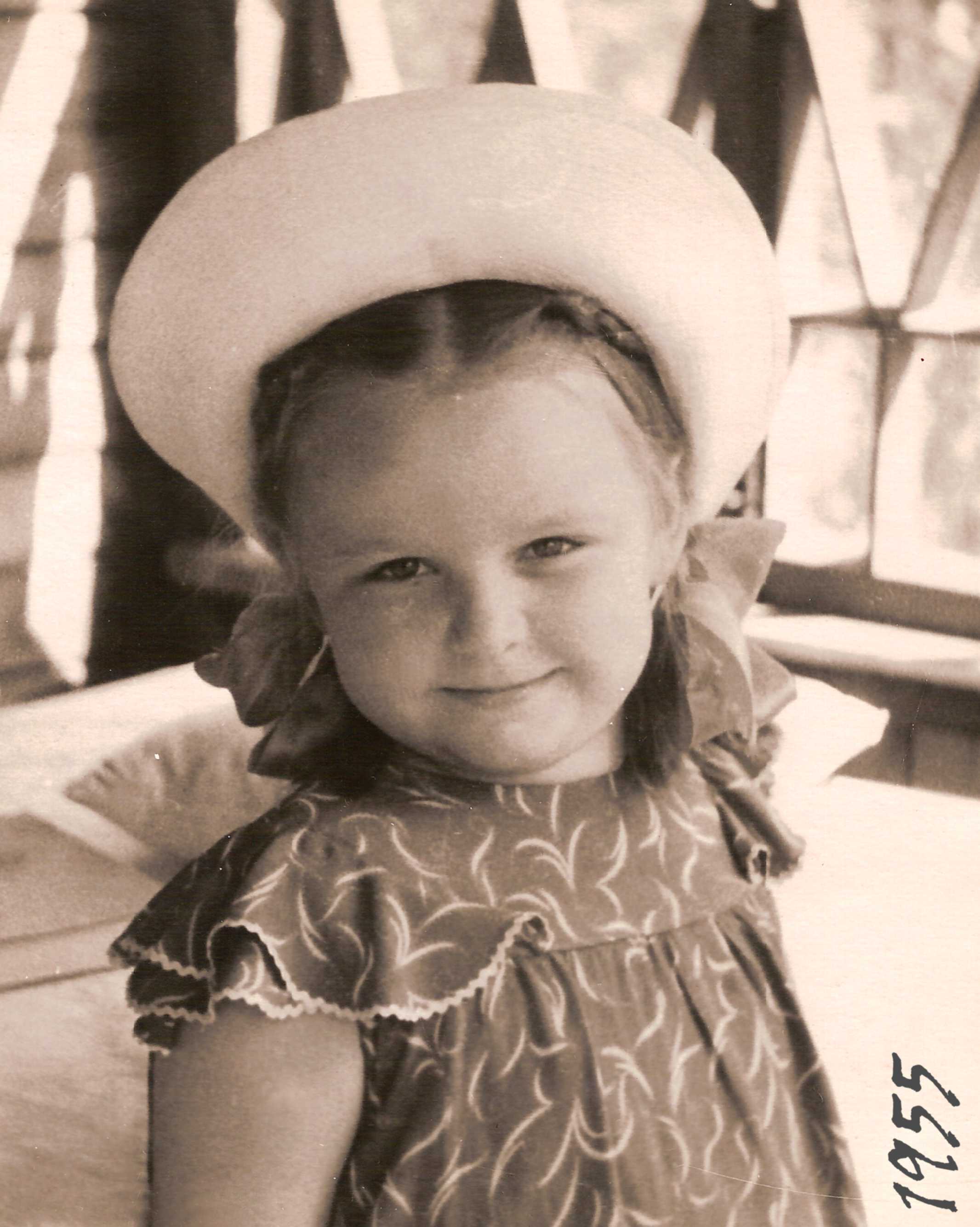
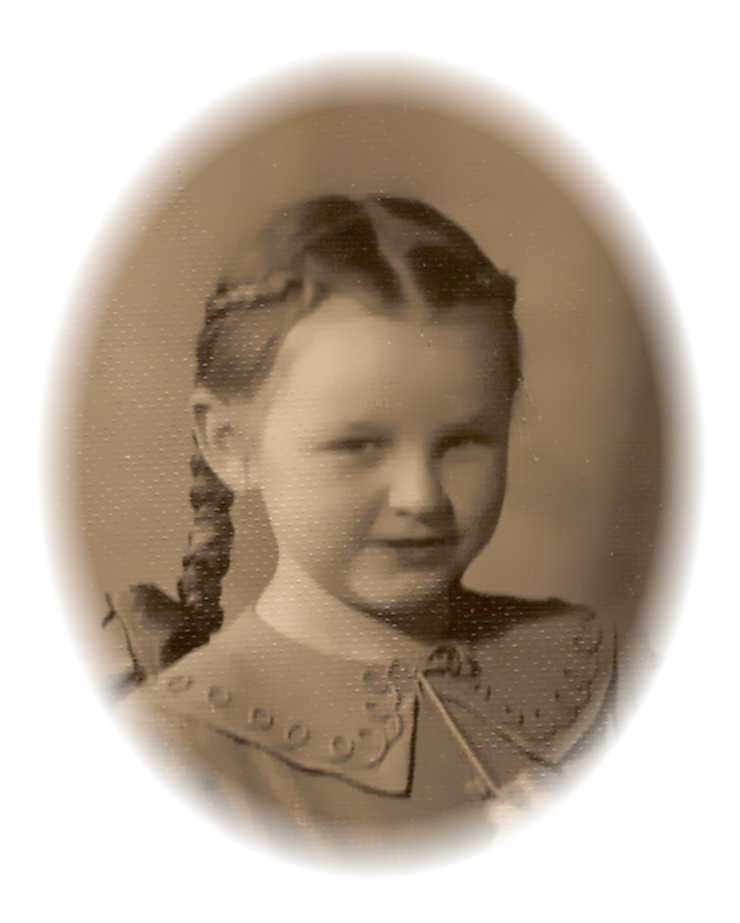
On November 7, 1952, Svetlana and her father were at the demonstration in Red Square. She was sitting on her father’s shoulders and when they were passing by the Mausoleum in the second column, which was very close, Svetlana waved her hand to Joseph Stalin and he waved back to her. When Svetlana told this story to her younger colleagues, they could not picture that to themselves saying that the story was too “ancient”.
In 1955, Svetlana entered Special English Language School No. 4 (No. 1260 nowadays). And of course, she was an Octobrist, a Young Pioneer, a Young Communist Leaguer and an excellent pupil ever.
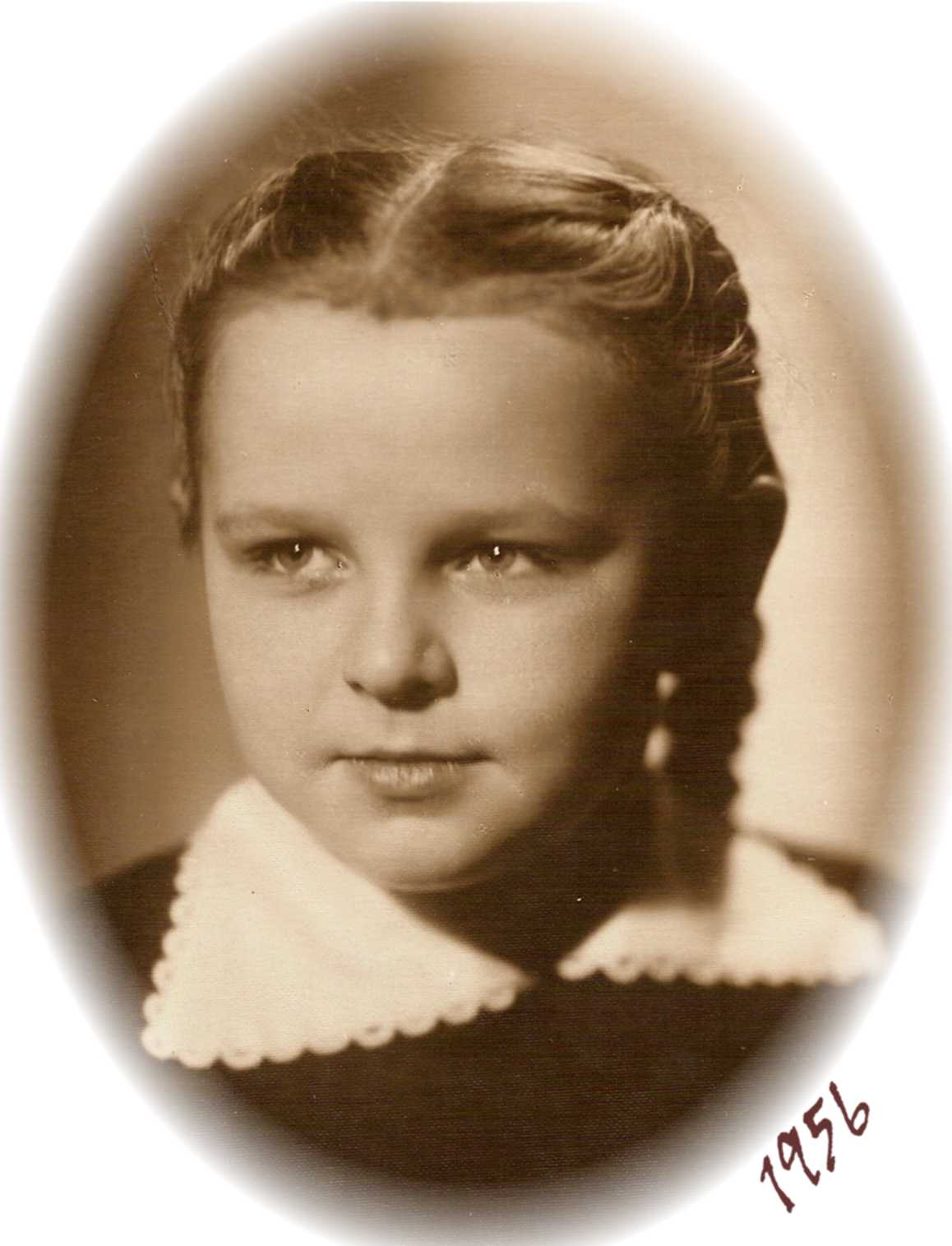
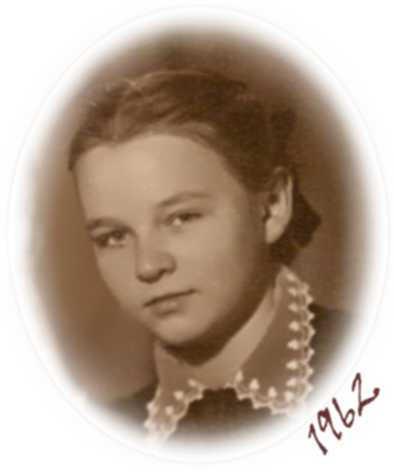
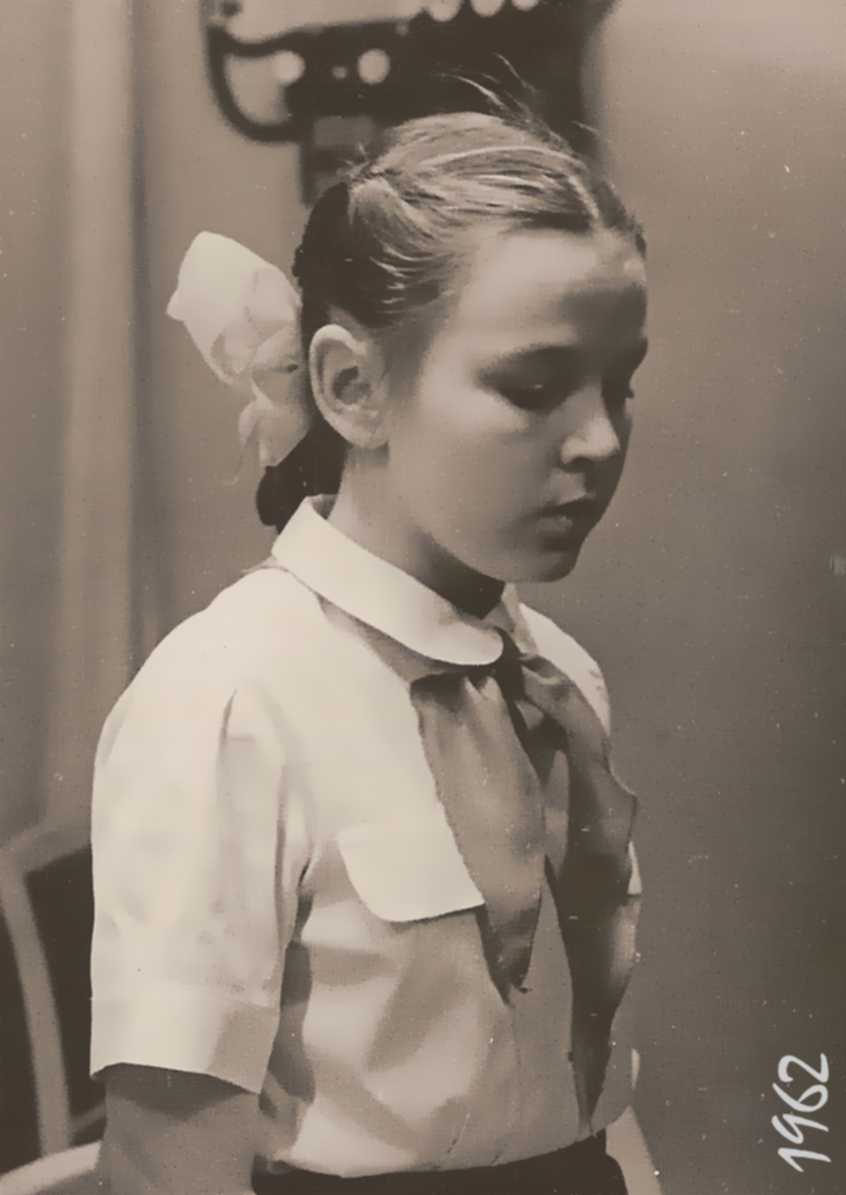
Here are two interesting photographs, on the reverse side of which Svetlana wrote:”That’s Me!”
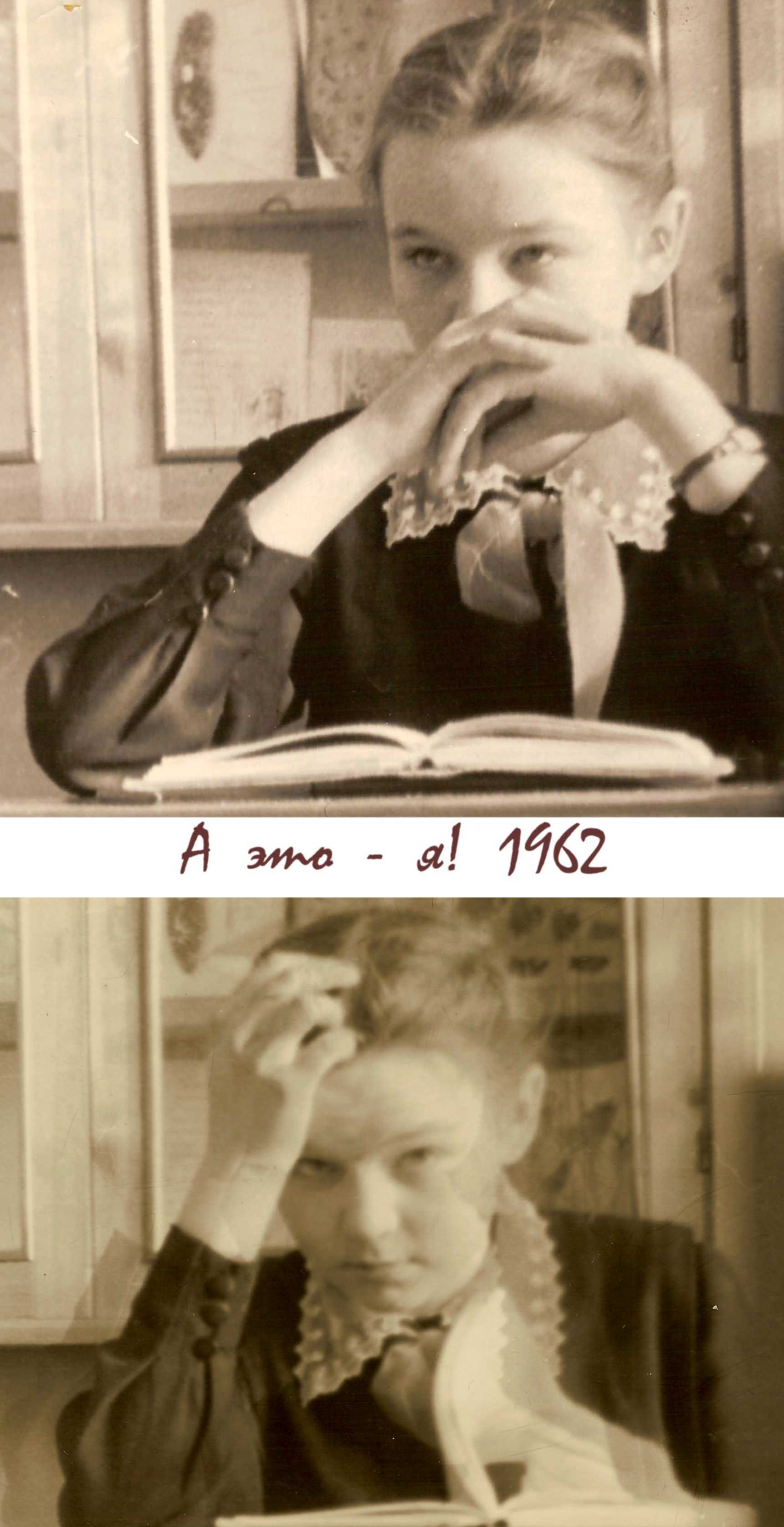
It was an evident self-identification attempt; now we can only guess what Svetlana liked about these photos, from her expression, character or something else…
And of course, the Public Work. Just like that, starting with the capital letters. It included not only the duties of the Unit Council Chairman but also was directly relevant to the school history and its unique chronicle. Here is a historical document written by Sveta, which survived to our time.
”I was very lucky. It was we who started the school chronicle in the autumn morning of 1957. It was our matters and holidays that became the School’s traditions and history. It was we to whom G. Winston and J. Aldridge came for a visit. It was we with whom the Cubans sang and danced in 1961, and our boys wrote poems about the courageous barbudos… It was we who had been gathering nuggets of information about General D.M. Karbyshev for a year (there had been no books about him yet). It was we to whom sculptor V.Ye. Tsygal, author of the monument to the hero in Mauthausen, came for a visit. It was at the solemn meeting at the Young Pioneers’ Palace when the school was given the name of D.M. Karbyshev, and his grandson and granddaughter were among us. By the way, the Palace, that may seem to you an integral part of the landscape, was constructed in the time of our childhood. It was we with whom energetic Inna Mikhaylovna rehearsed our first concerts of the “Musical Spring”, the most joyful and long-awaited holiday. It was we who organized the Club of Interesting Meetings visited by many celebrities, such as I. Andronnikov and V. Tikhonov. And above all, it was we whose favorite head master was D.N. Taptykov and our dear teachers were Ye.A. Bazhenova, Ya.F. Lerner, Ye.A. Chumkina and many others. We remember and love them.
My daughter N. Guseva is a 9th class pupil at my school. I hope that my son will also study there when he grows up a little”. Yes, this is exactly how it all happened…
Sveta graduated from the school and was awarded a silver medal in 1966.
By the way, thanks to our wonderful teacher of physics Yakov Fayvelevich Lerner in many respects, Sveta entered the Department of Physics at Moscow State University in 1966. And that was a double class: 10th and 11th classes graduated the same year (there was such an experiment).
The studies at the University were not easy for Svetlana. She never did things by halves and studied a lot. She had the best notes of all lectures; she never went to an exam if she was not ready to answer even one (!) question.
The story of the studies was connected with the summer construction brigades. Candidates for the construction brigades were thoroughly selected (!). The brigade members were given uniforms, stripes and badges. After the 1st year of studies, they were sent to the village of Maksheyevka, Smolensk Oblast, where they constructed a huge grain storehouse and started to build a school.
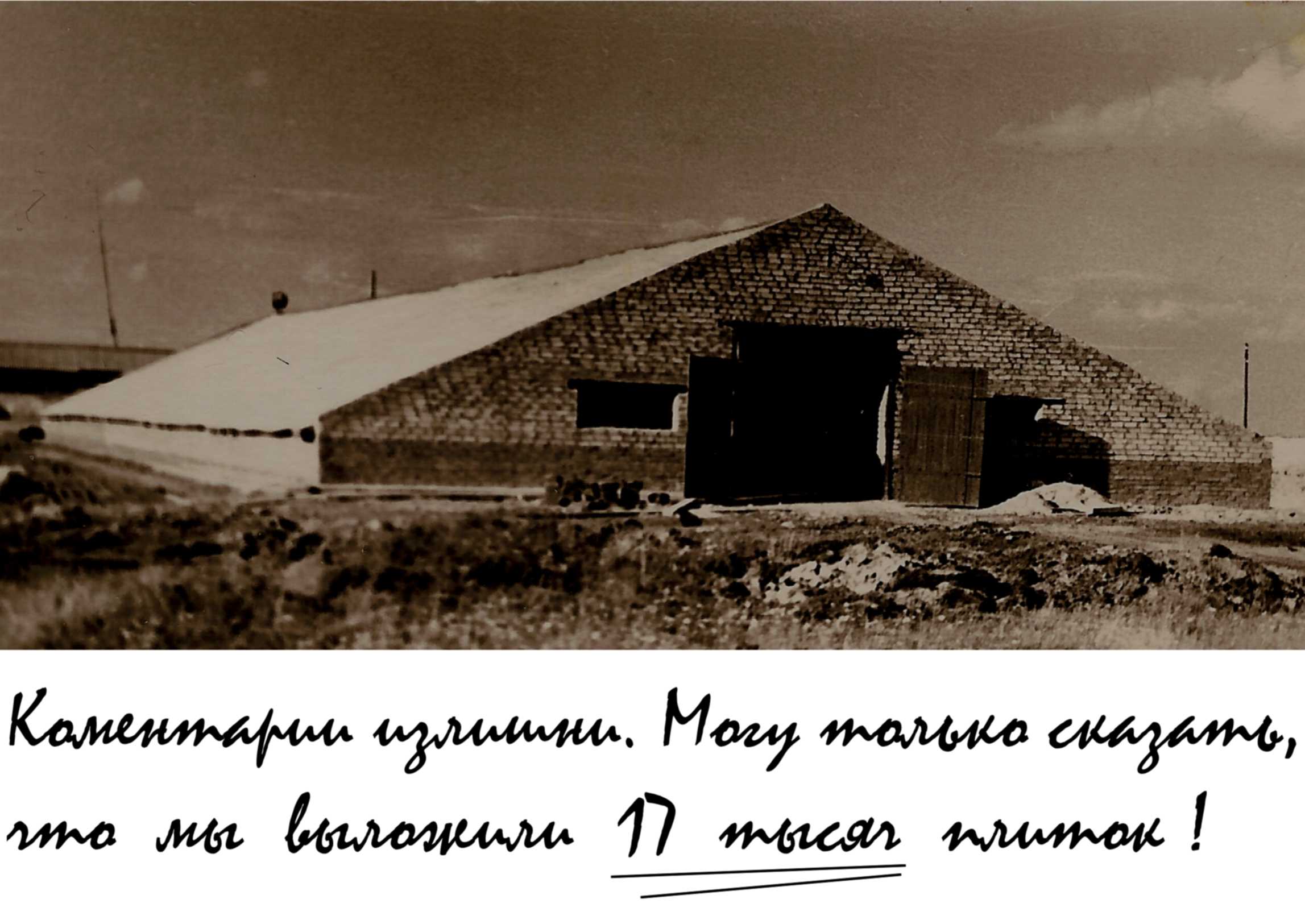
Sveta proudly wrote on the reverse side of the photograph: “No comments. Suffice it to say that we paved 17 thousand tiles”. She meant the asphalt concrete tiles with which the grain storehouse floor was paved.
Construction finishing. The girl with the flag in the photo is Sveta, of course.
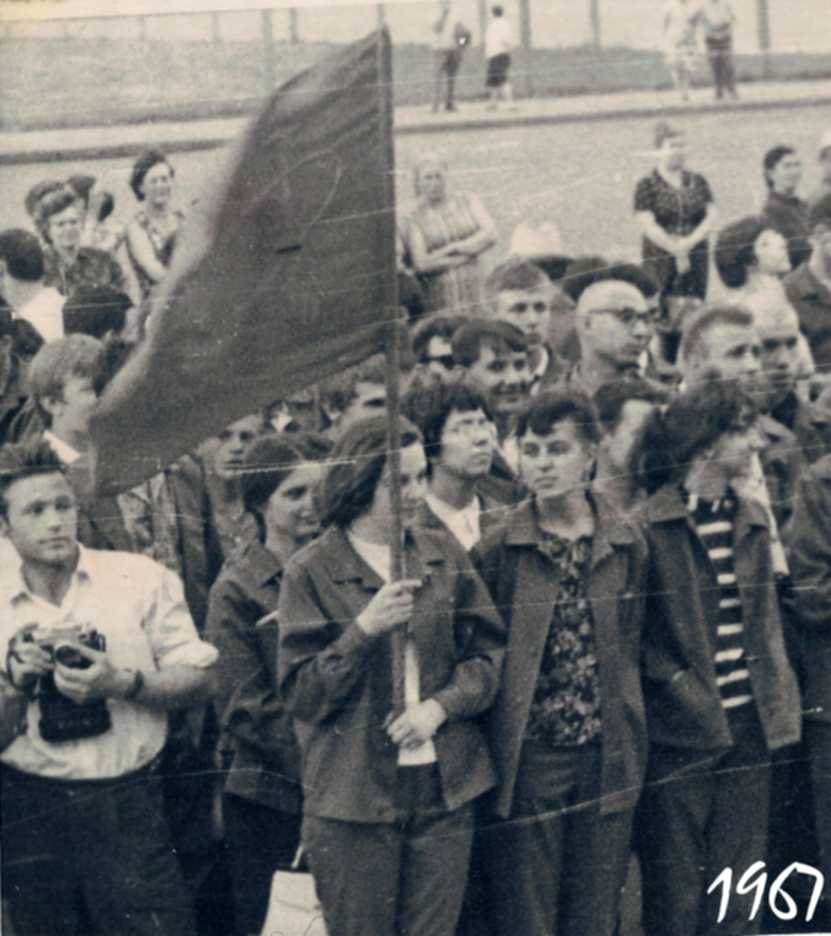
2nd year of studies, and again the construction brigade after that. One might think that the studies were not the main thing. Not at all. The point is that life was so bright and unusual there, in Maksheyevka. Students mastered the professions of a tiler, bricklayer, plasterer, carpenter. And records, of course. Sveta bricked the greatest amount of bricks during a day.
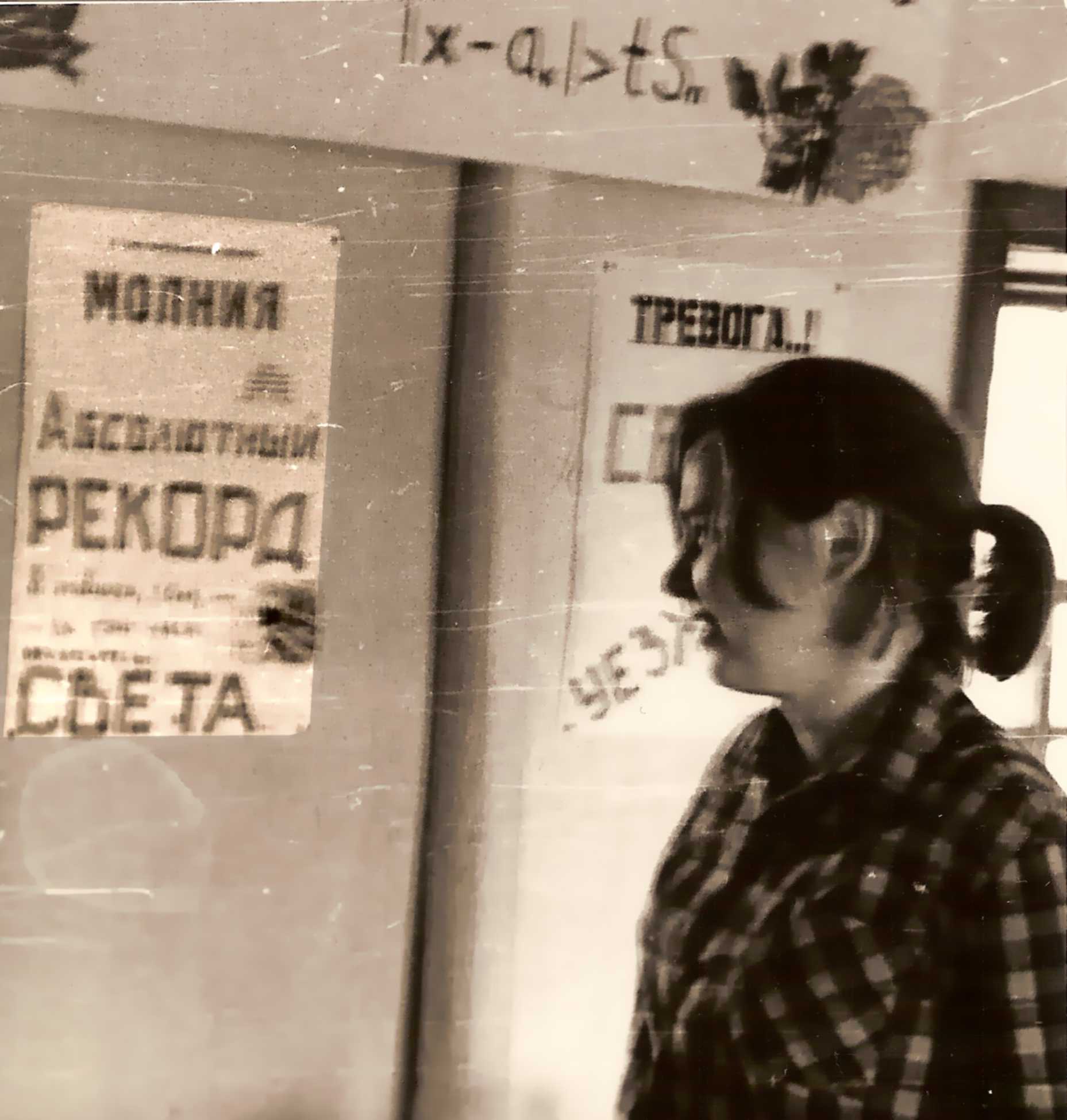
They had to cook meals themselves; the state farm provided them with perfect fresh foodstuffs and even transport.
Sveta on a cart with foodstuffs: “I understood in Maksheyevka that I needed a horse to be fully happy. Give me a mustang and let me ride it in a prairie!”
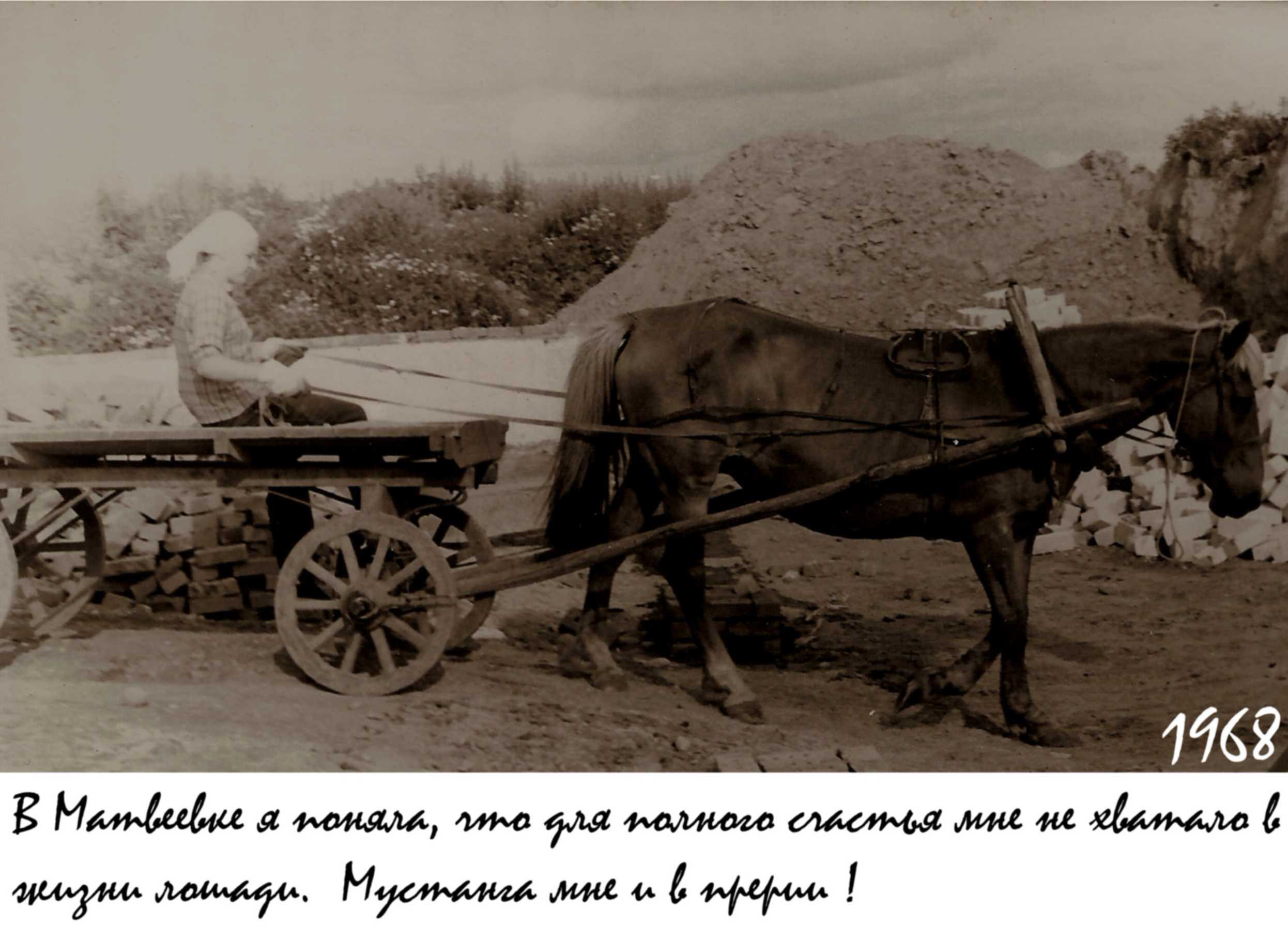
A photo of happy Sveta; and another one in which Sveta is happy again, holding a brick. And she laid so many of them...
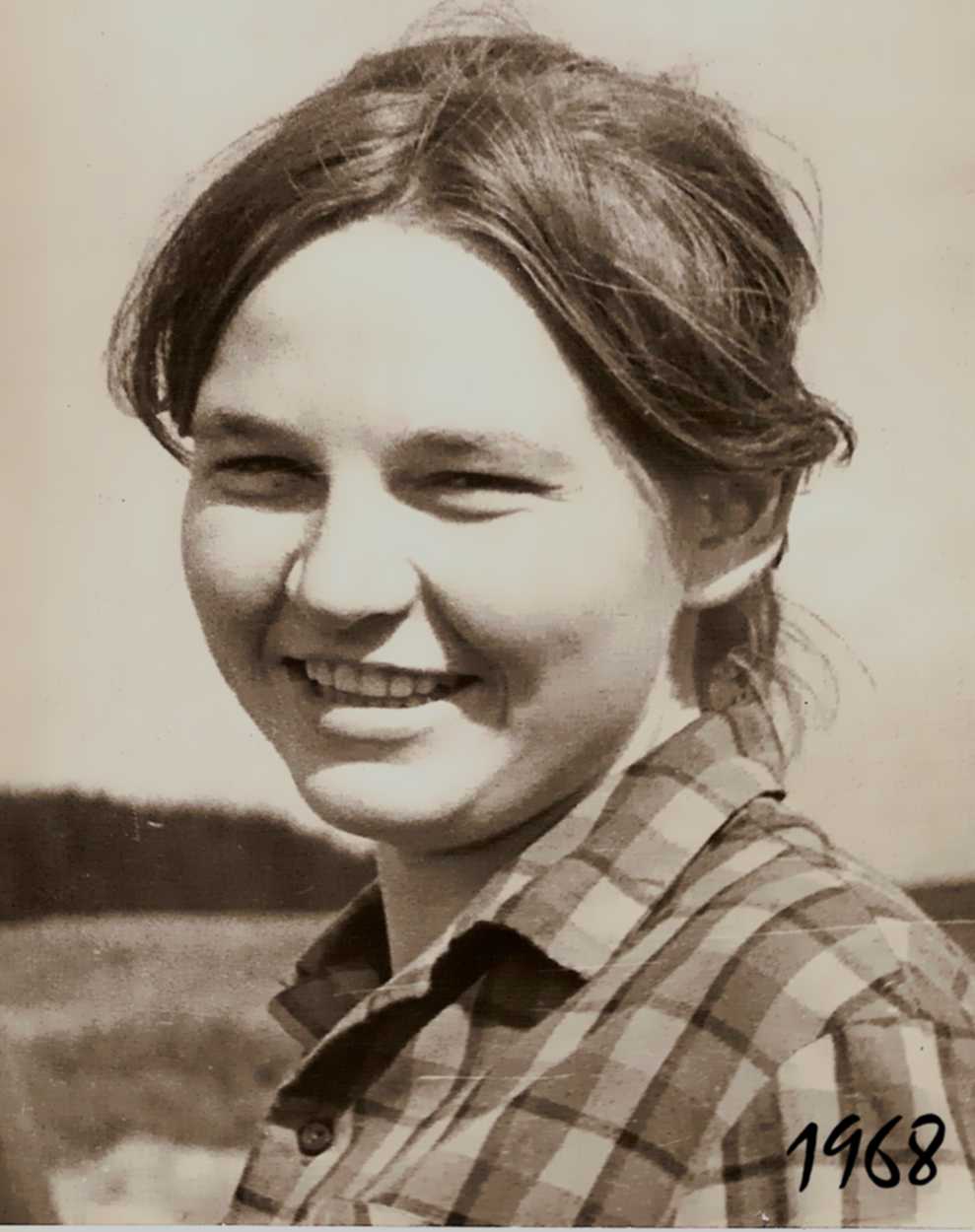
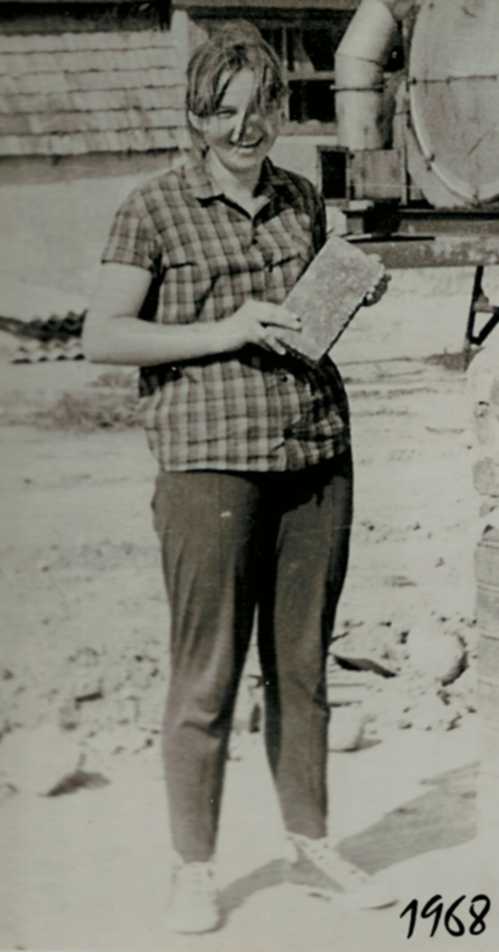
3rd year of studies and the most unforgettable construction brigade, the Sakhalin one. The selection was very strict because everybody knew each other very well already. They flew to Khabarovsk by IL-62, a new airplane at that time; then by a local airplane. And finally, Tymovskoye (approximately in the middle part of Sakhalin Island), the village in which they had to build wooden duplex houses of timber.
Only on Sakhalin they understood the words of a popular song: “…the weather is normal on the island…” It meant +5C (41F), endless rain and in fact, very “low clouds”. Besides, there were mosquitoes, midges, horse-flies and tocks in taiga. There were just a few sunny days during 2 summer months!
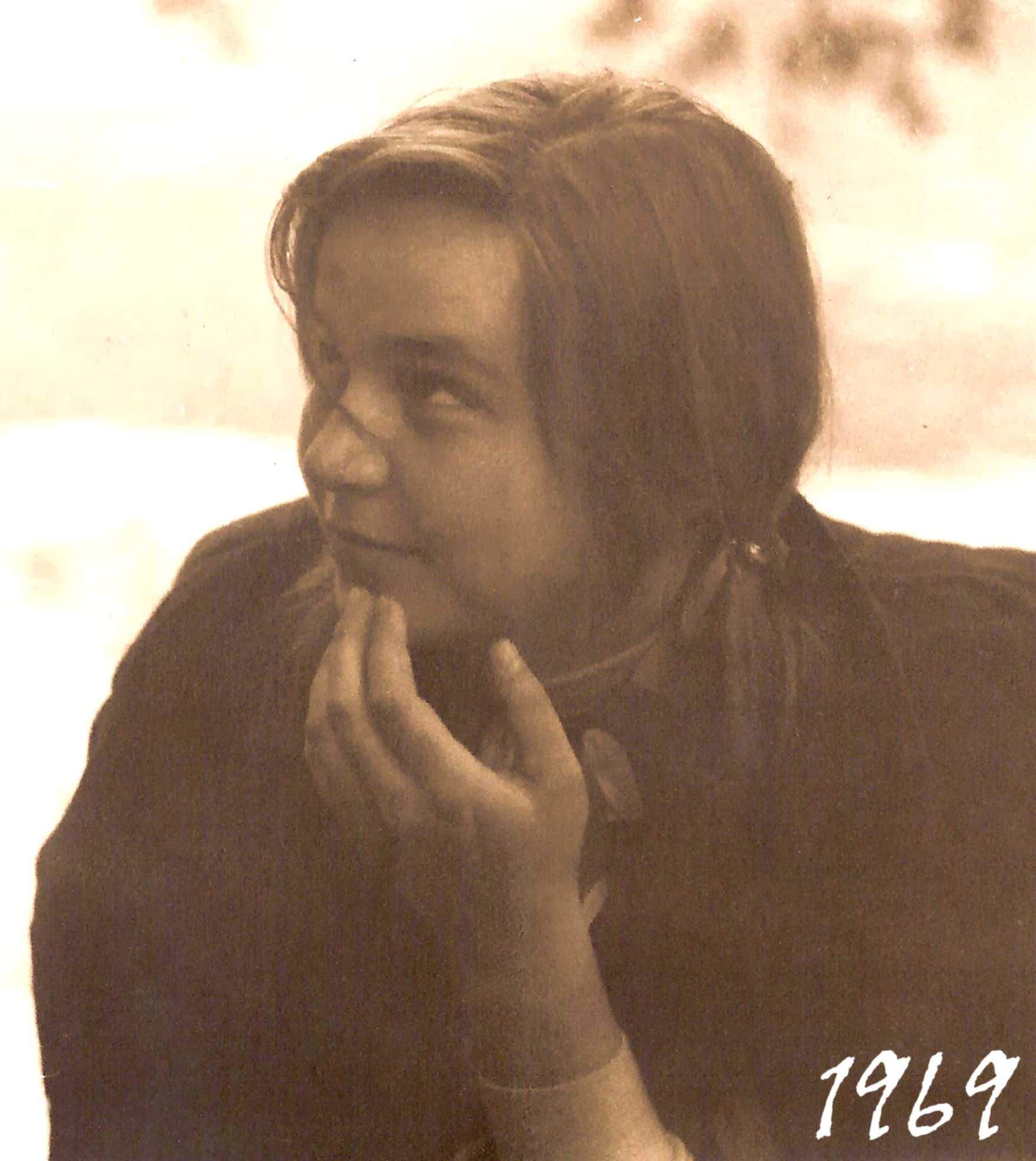
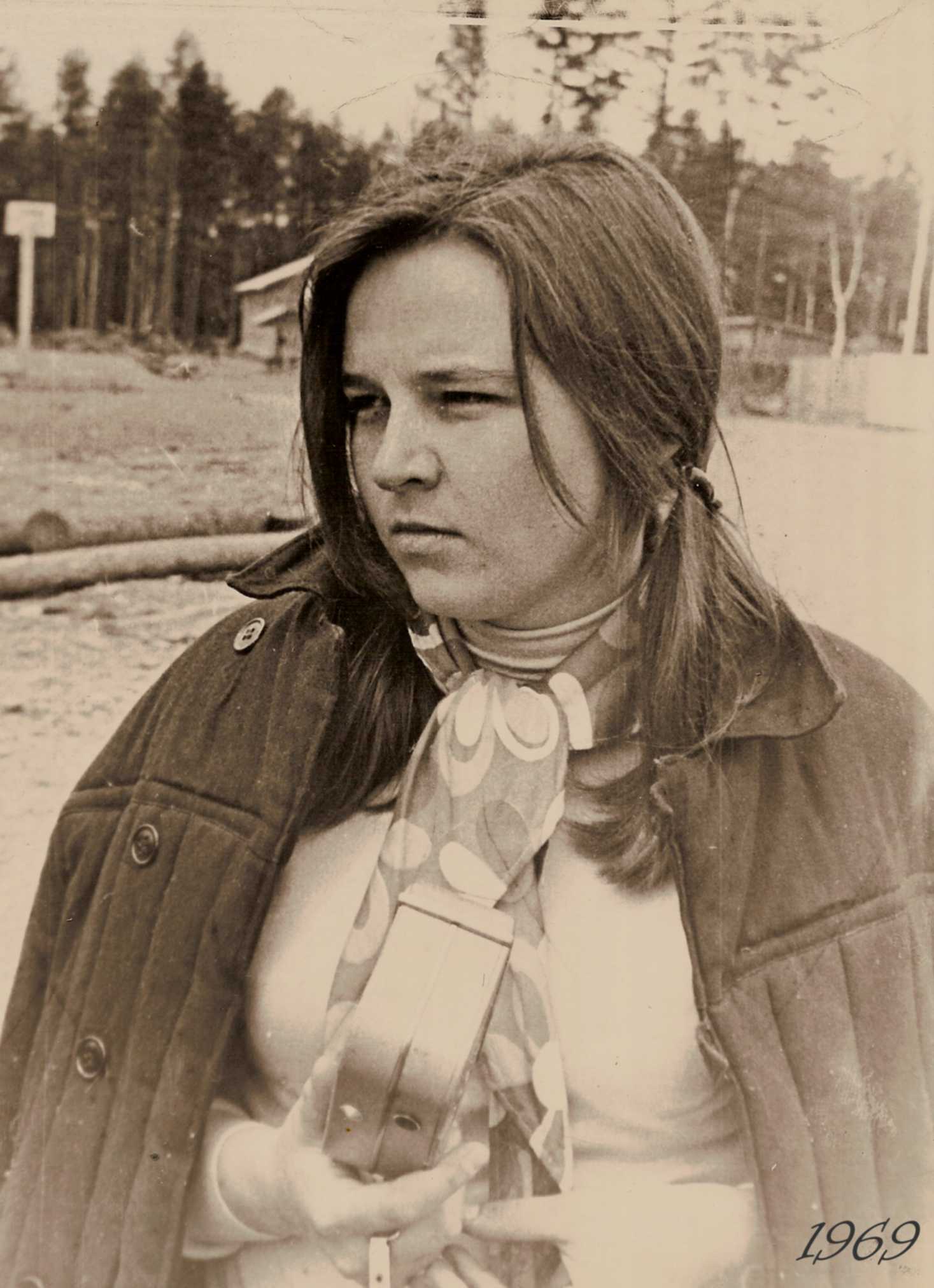
The dwelling corresponded to construction conditions: it was an unfinished hostel with no floor on the ground floor, with no heating… But that was Sakhalin, the bordering area no one can enter just for fun. And that was great! Sveta worked as a plasterer. Their construction brigade constructed a whole street.
Now here is a photo made by a professional photographer; well, almost professional; a very talented one, at least.
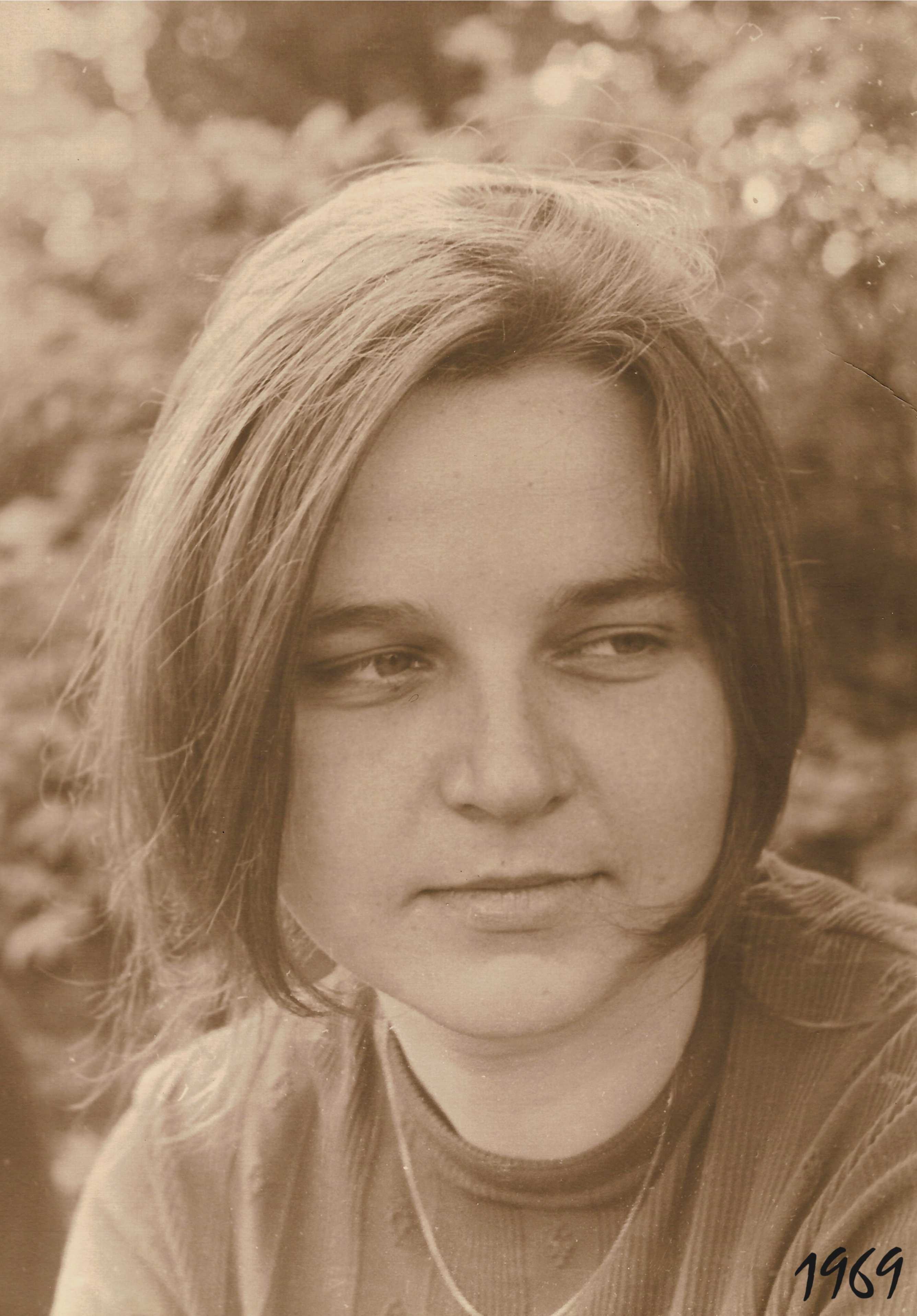
But the most unforgettable events happened later. The Yuzhno-Sakhalinsk authorities arranged for the interested students a trip to the islands of Kunashir and Shikotan, the southern islands of the Kuriles. That was really an “ecstasy” for Sveta.
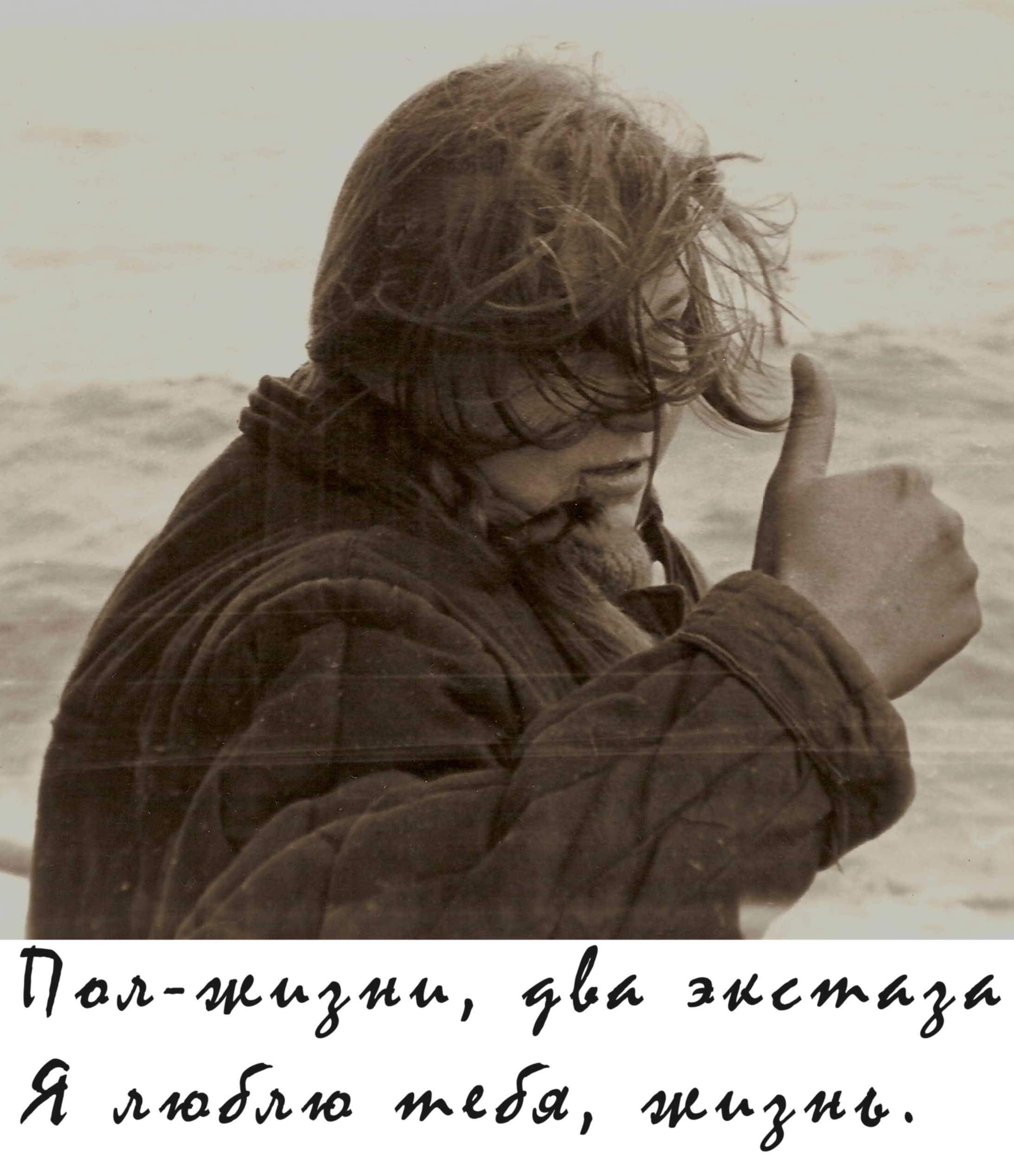
It’s the Pacific Ocean behind! Sveta wrote on the reverse side: “Half of life, two ecstasies. Life, I love you!” Sveta’s favorite expression “Ecstasy!” was doubled, and the remembrance of the life on the islands accompanied her during her entire life, not just a half of it.
Shikotan Island, the only village of Krabozavodsk: at that time it was the place where the “Pacific Saury Parboiled in Oil” was produced for the whole USSR.
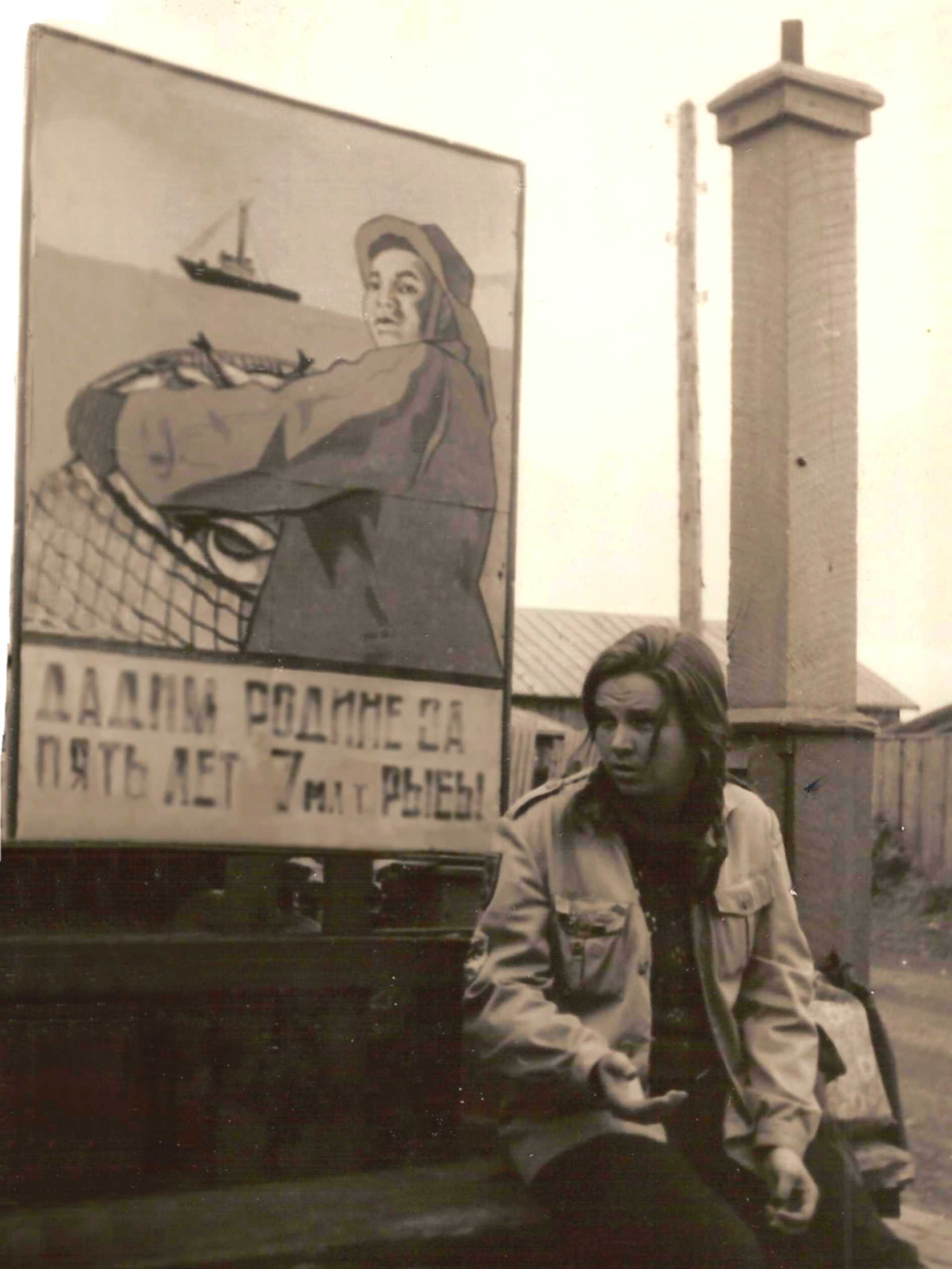
Of course, Sveta was late for the 1st of September. After many adventures, she returned to her studies.
Another typical episode in Sveta’s life. According to some unknown rules, a deputy student should have been included in the District Council. So who else could be elected but Sveta? And Svetlana Ivanovna Zheludeva, student of Moscow State University, after the elections at the general meeting of the Department became Deputy of the Leninskiy District Council of Workers’ Deputies of electoral district No. 294, 12th convocation of 1969 (Deputy’s card No. 294). The nickname of “Svetka the Deputy” or its brief version “Dep” was the only reaction of her fellow students and was always uttered with due respect. This nickname was added to another one, which emerged in the construction brigades: “Svetka the Railway Engine”. It was given for her remarkable work capacity. Unfortunately, I don’t know much about that deputy’s period of Sveta’s life. Although, judging from scarce facts, she fulfilled her deputy’s duties to the best of her ability as ever.
That was the period when she chose the chair and research adviser. Sveta never aspired to easiest ways. Therefore, she chose the Chair of Low Temperatures as her basic chair (headed by N.B. Brandt) and I.A. Kurova (from the Chair of Semiconductor Physics headed by V.S. Vavilov) as her research adviser. By that time, I.A. Kurova and S.G. Kalashnikov’s works on the properties of germanium with the admixture of gold resulted in the discovery of domain instability in semiconductors in intense electric fields. The results of fruitful cooperation of theorists and experimenters in the research on electric domain instability were rewarded with the Lomonosov prize (I.A. Kurova, V.L. Bonch-Bruyevich). Sveta remembered her first instructors all through her life, and the “Electricity” textbook by S.G. Kalashnikov always was her favorite bed-side book.
After the 4th year of studies, Sveta and her friends went to Maksheyevka again. They built a monument to the villagers who perished during World War II.
After the 5th year of studies, there was the Solovki restoration brigade in which Sveta worked again as a bricklayer, though in a different way: now she worked more as a sculptor, cutting off superfluous material. For many years Sveta remembered the White Nights, the sea and the incomparable sky of Solovki.
September again, the studies and degree work. Not waiting till the end of studies, not listening to anybody’s advice, having suddenly broken a current affair, Sveta married her course mate G.A. Gusev who was her friend since the 1st year at the University. On November 12, 1971, they celebrated their wedding at the “Ukraina” Hotel restaurant.
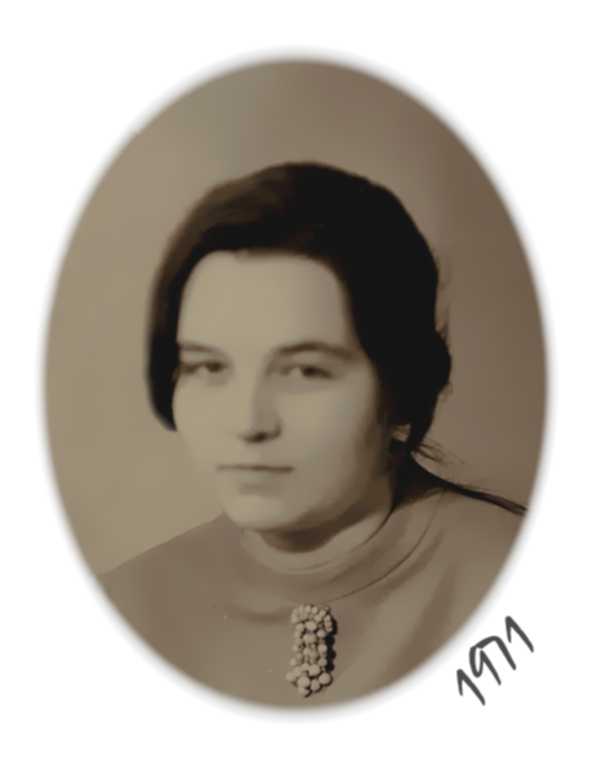
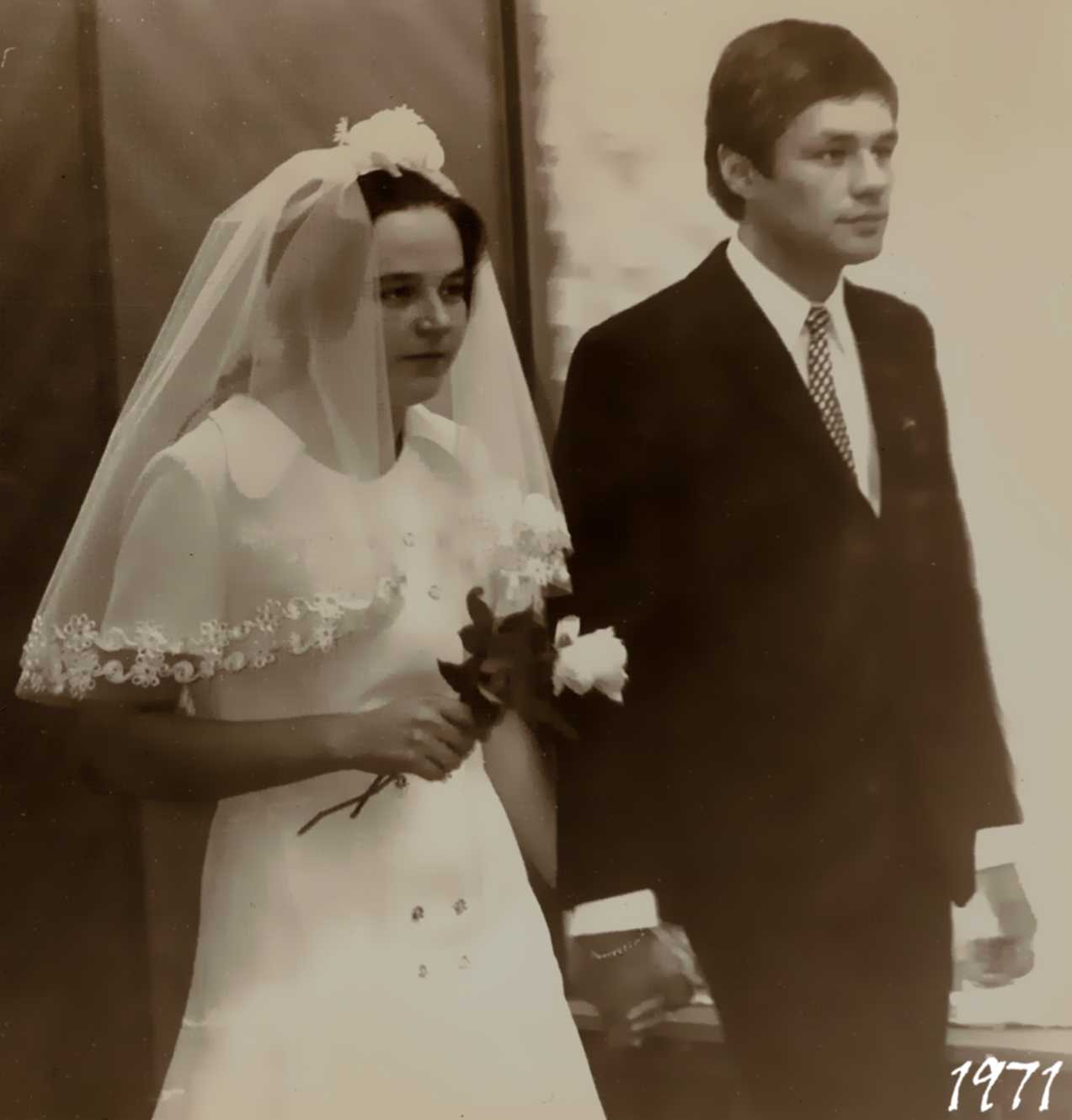
The newly married couple did not return to live at their parents’ place. They went to a rented one-room apartment in Zyuzino right from the wedding and spent a year there.
After the successful graduation from the University, having received a magna cum laude diploma, Sveta at once entered the full-time postgraduate courses.
The independent life continued. When the first apartment rent period was over, there was another rented apartment in Chertanovo. Finally the married couple joined a cooperative society and obtained their own two-room apartment No. 2 at 3 Miklukho-Maklaya St., Belyaevo.
On June 6, 1973, Sveta gave birth to a beautiful girl she called Nastya in honor of her dear grandmother Anastasia Vasiliyevna Krasnikova.
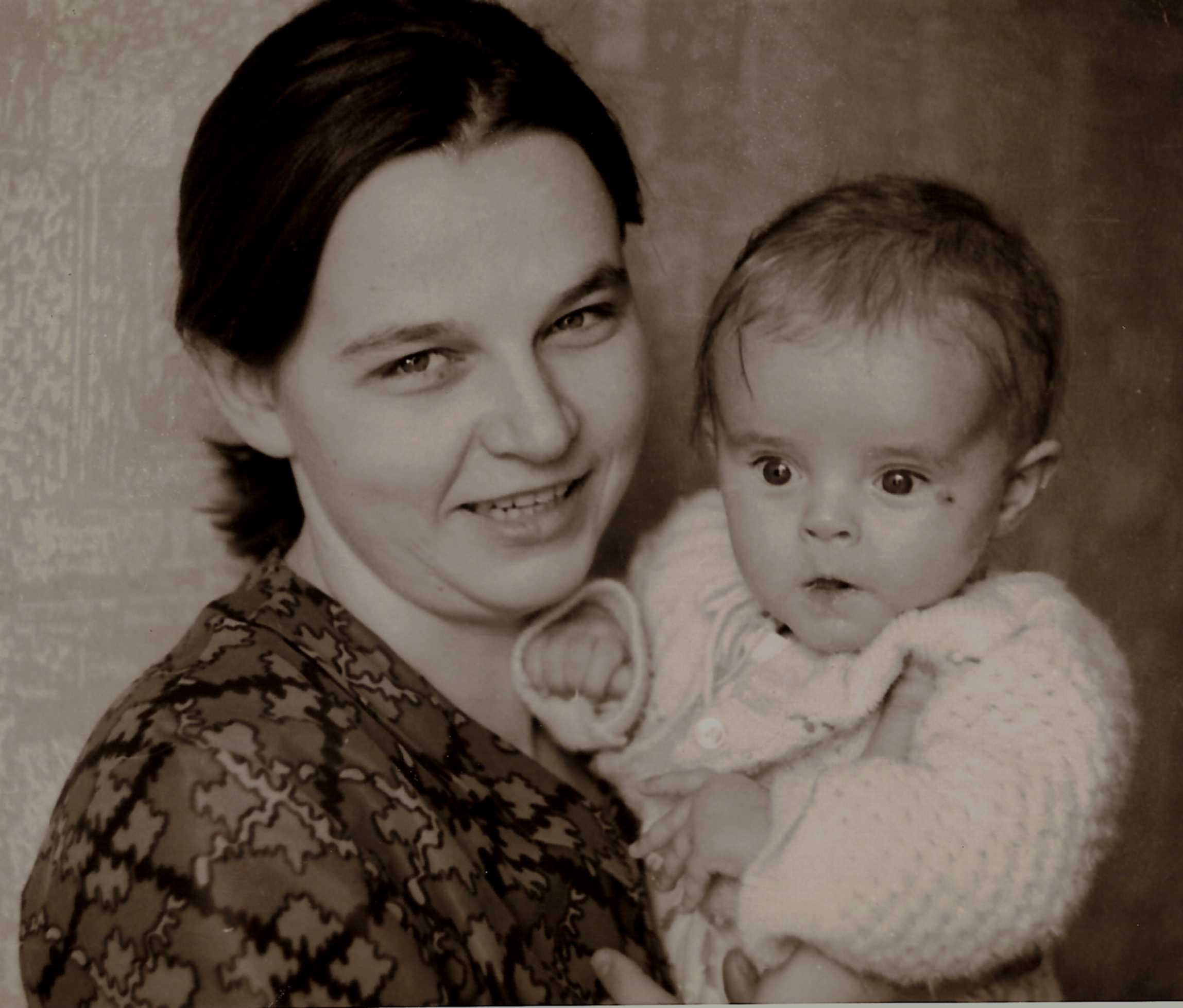
A happy mother.
But Sveta still was “Svetka the Railway Engine”, so nothing could stop her from defending her candidate’s thesis The Research into Domain Recombinant Instability in the Modes of Pulse and Alternating Voltage in 1976. Formally she did not lose time: 3 years of postgraduate course and 1 year of maternity leave! And she had time for everything: her family, house and recreation!
In 1976, Svetlana Ivanovna Zheludeva was employed by the Crystallography Institute of the USSR Academy of Sciences as a junior researcher. At first, maybe mechanically, Sveta’s scientific interest remained in the field of semiconductors. But then she found her basic direction she would pursue all through her life. The scientific direction was absolutely new for Sveta: the research into the structure of substance by means of X-radiation source under the conditions of diffraction and observation of secondary processes, electromotive force, photoelectromotive force, fluorescence.
Only in 1986 Sveta was transferred to the position of senior researcher. On July 16 of the same year, she gave birth to her wonderful son. Of course, he was named Anton in honor of her dear grandfather Anton Petrovich Krasnikov. Anton is one year old in the photo.
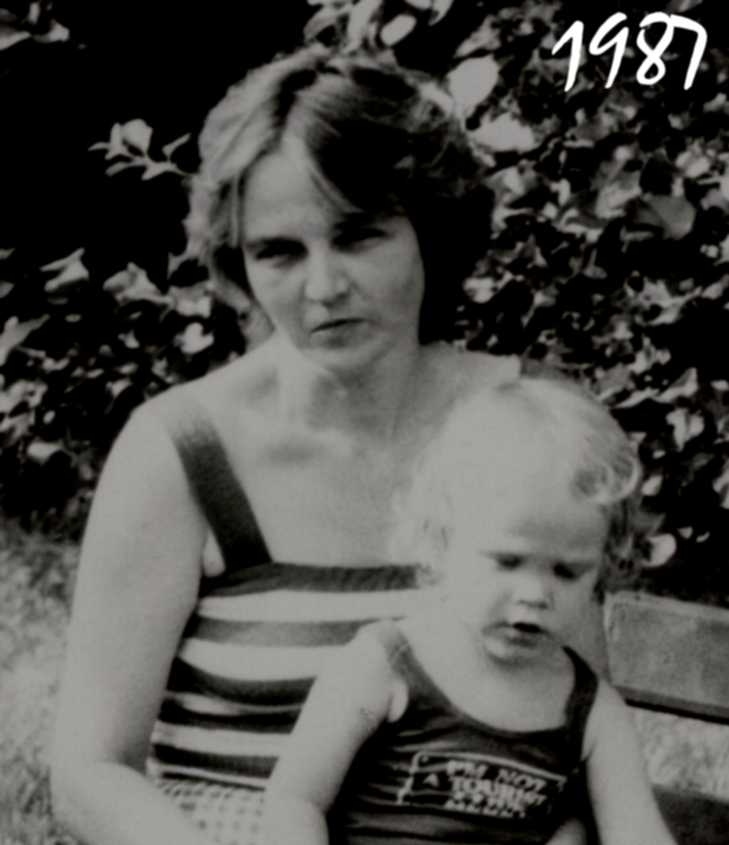
1991. Transference to the position of senior researcher.
Svetlana Ivanovna’s research work resulted in the brilliant defense of her doctorate thesis The Method of Long-Period Standing X-Ray Waves for the Characterization of Layered Nanostructures. The thesis included such terms as nanostructures, nanodiagnostics, nanotechnologies, although “Rosnanotekh” would be established much later.
1996. According to the attestation results, she was transferred to the position of leading researcher.
Life continued. Elder daughter Nastya got married and accepted the last name of her husband. Since then her full name has been Anastasia Georgiyevna Butrym.
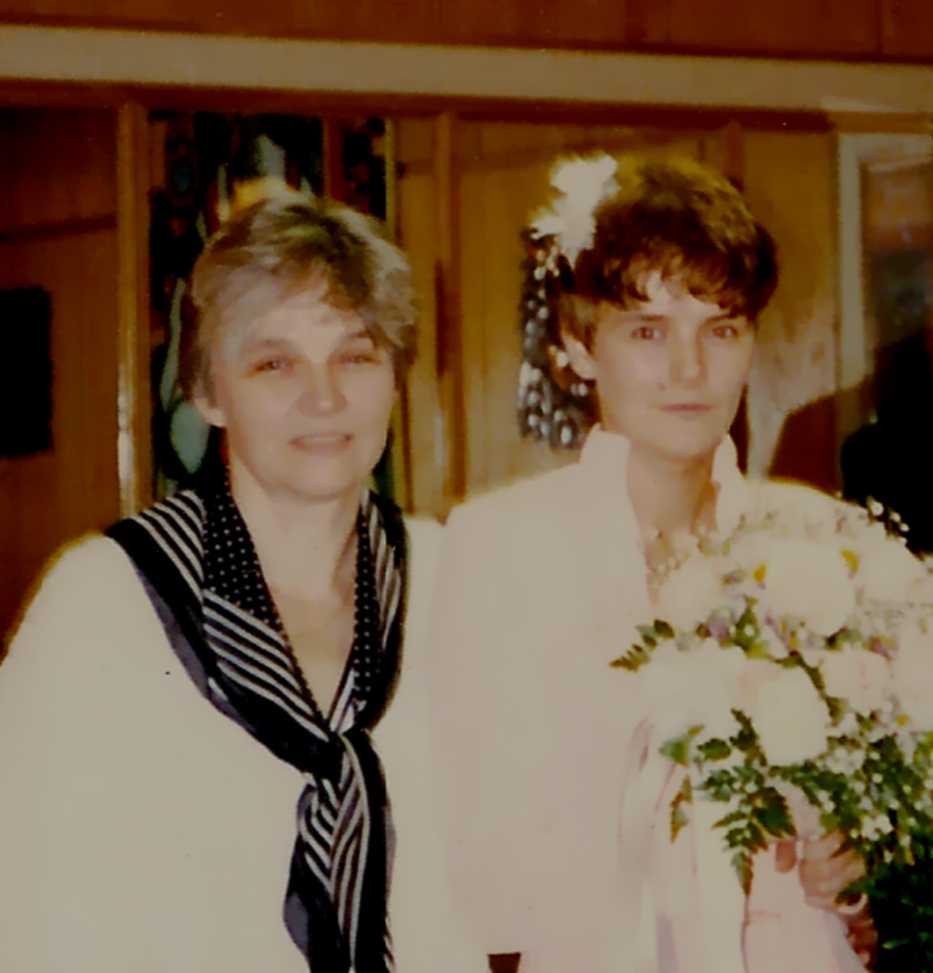
May 1998. Svetlana Ivanovna was appointed Acting Deputy Director of the Institute for research work.
September 1998. Svetlana Ivanovna was appointed Deputy Director of the Institute.
On June 8, 1999, Sveta became a grandmother. Her grandson was named Nikita.
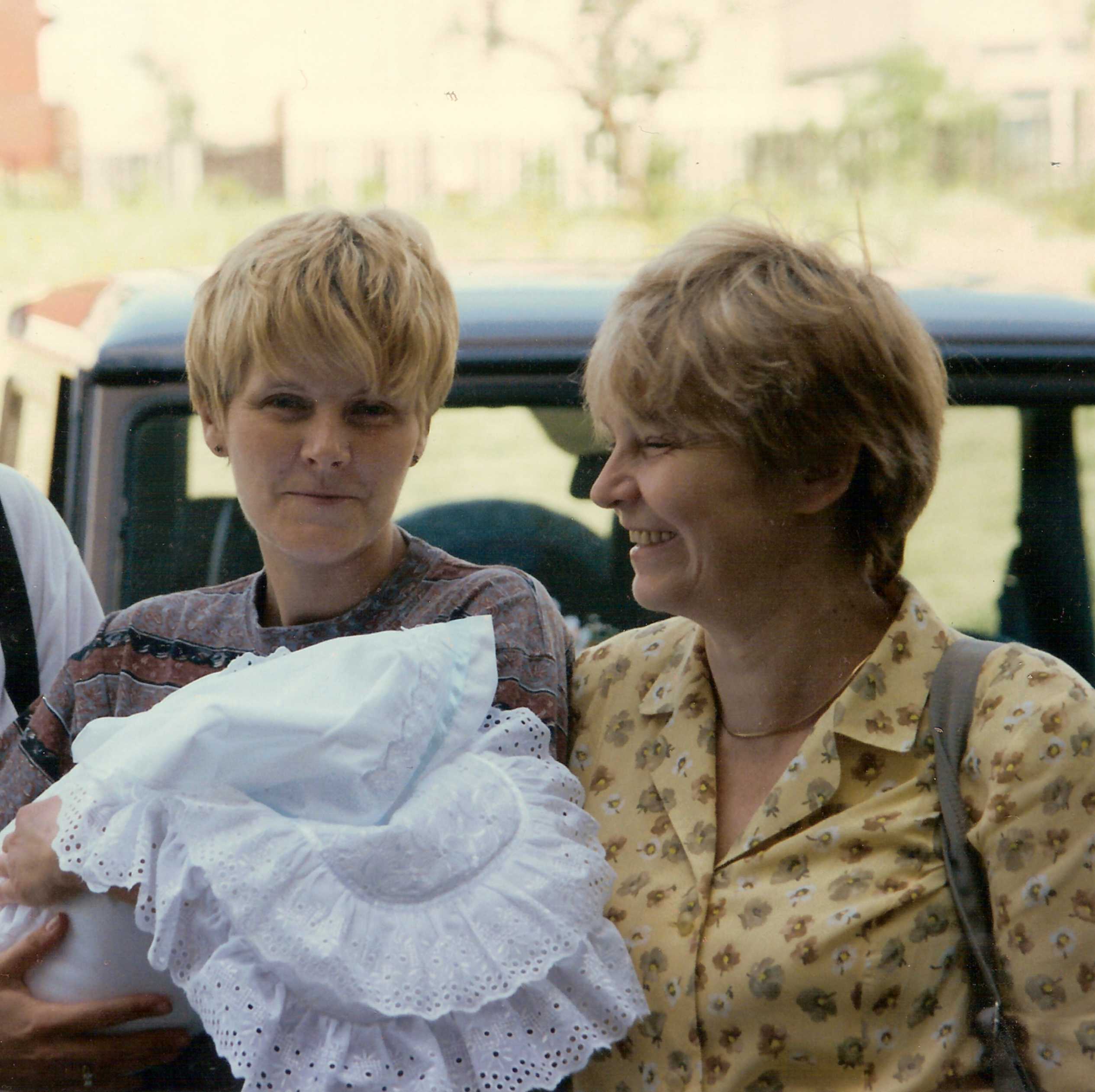
And on September 26, 2001, her second grandson Danila was born. He is under a year in this photograph.
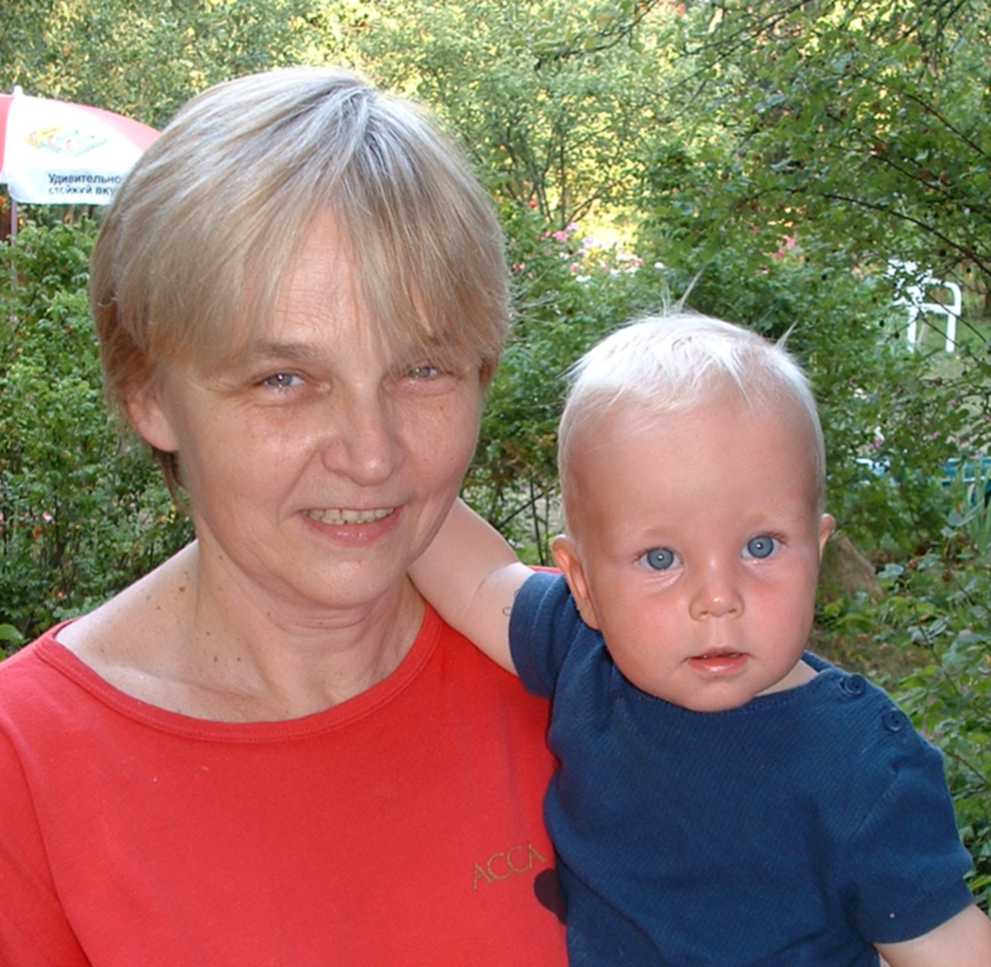
This photo shows grandchildren Danila and Nikita at the Moscow Zoo in 2007.
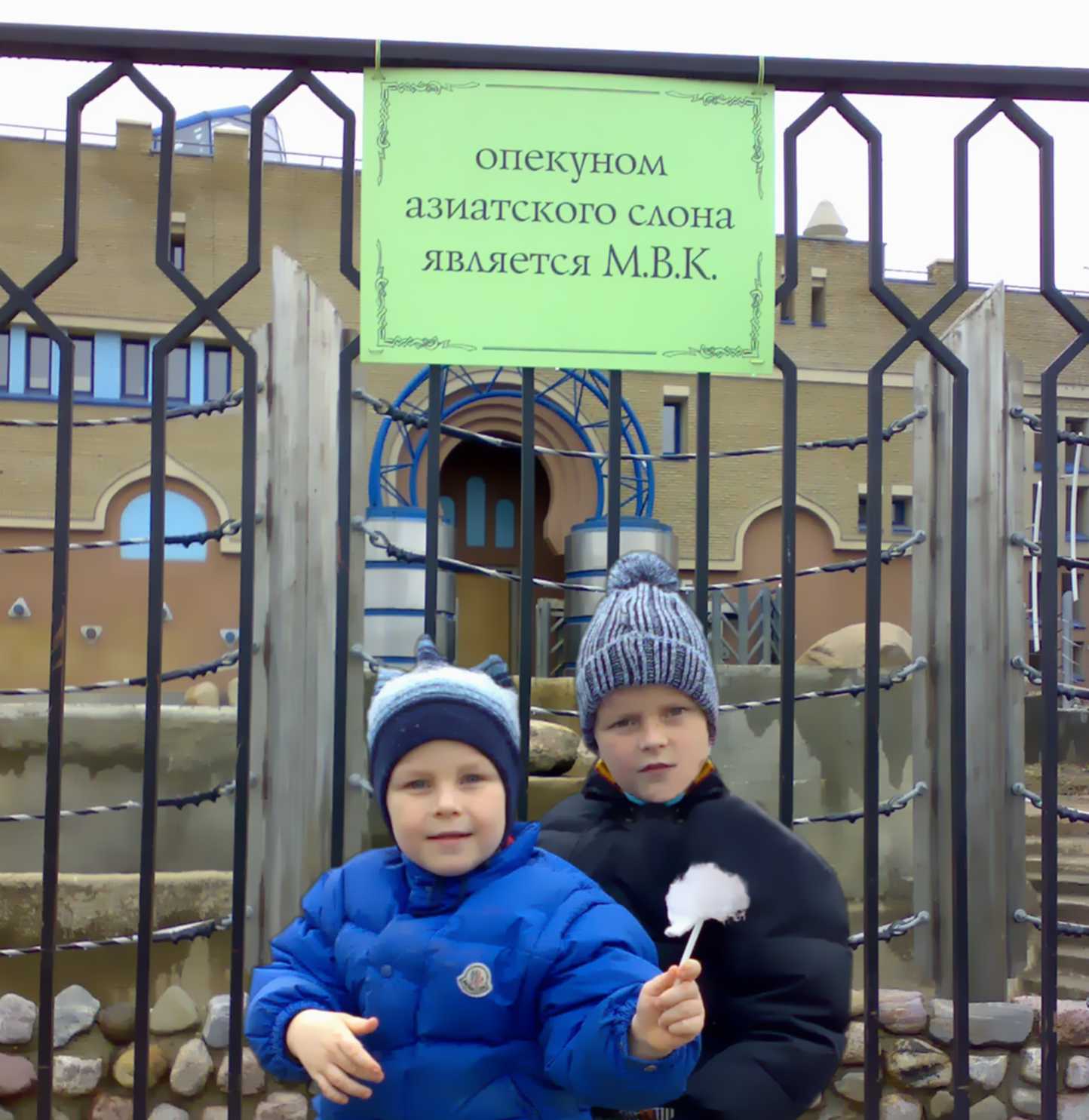
Having worked on almost all of the world’s synchrotron sources, Svetlana was a tireless enthusiast of the Kurchatov Institute’s synchrotron source renewal. The photo shows one of the stations created under her supervision.
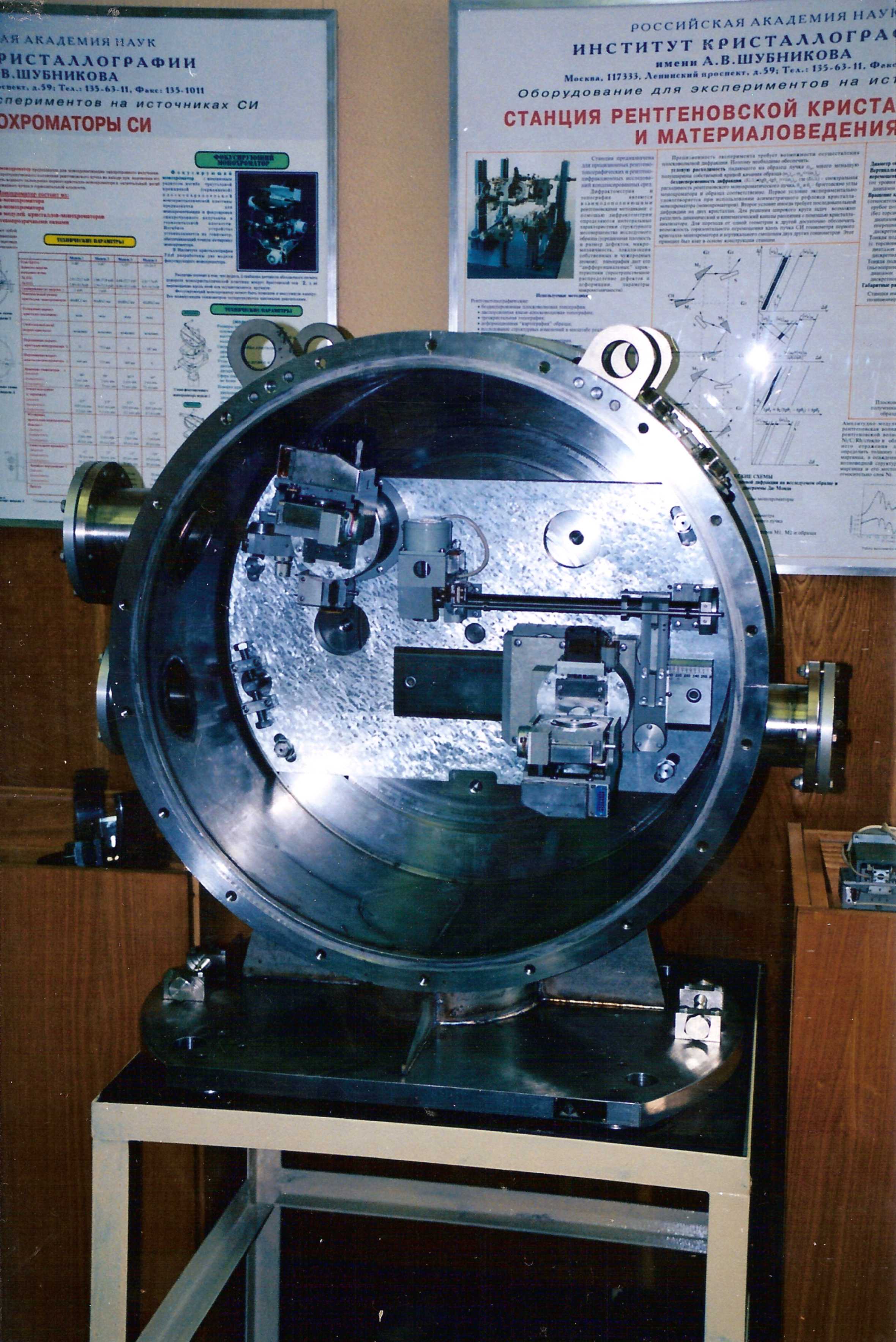
On February 22, 2007, by the resolution of the Russian Federation Government For the Establishment of Research and Engineering Facility on the Basis of Specialized Sources of Synchrotron Radiation “Sibir” at the Russian Research Center “The Kurchatov” Institute”, Svetlana Ivanovna Zheludeva was awarded the Prize of the Russian Federation Government in the Field of Science and Engineering.
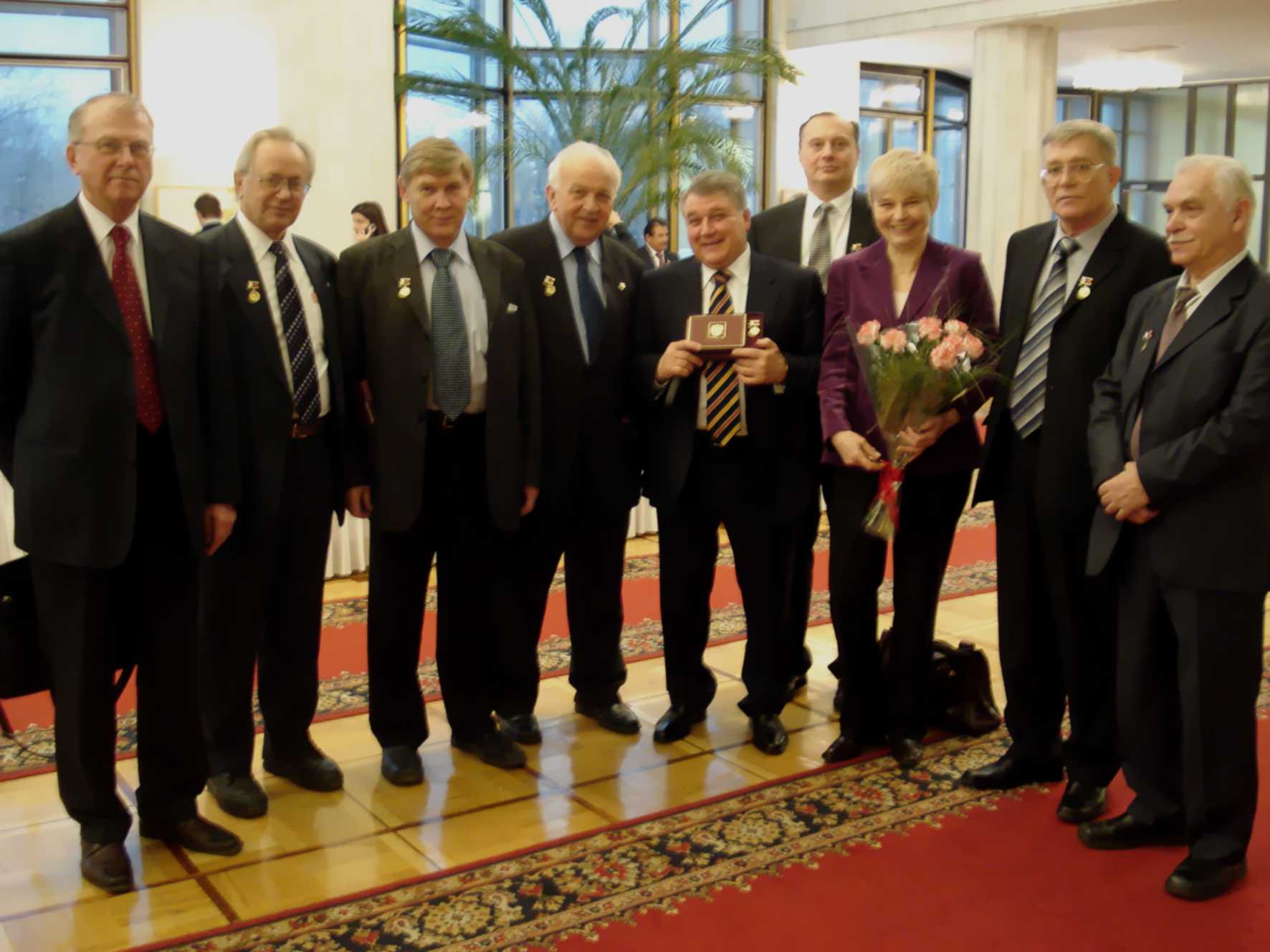
On May 17, 2008, Svetlana Ivanovna Zheludeva passed away…
She was buried at the Babushkinskoye cemetery according to the Russian Orthodox tradition. The small area far from the entrance, near the fence, where the daughter rested in peace near her father, was full of flowers.
